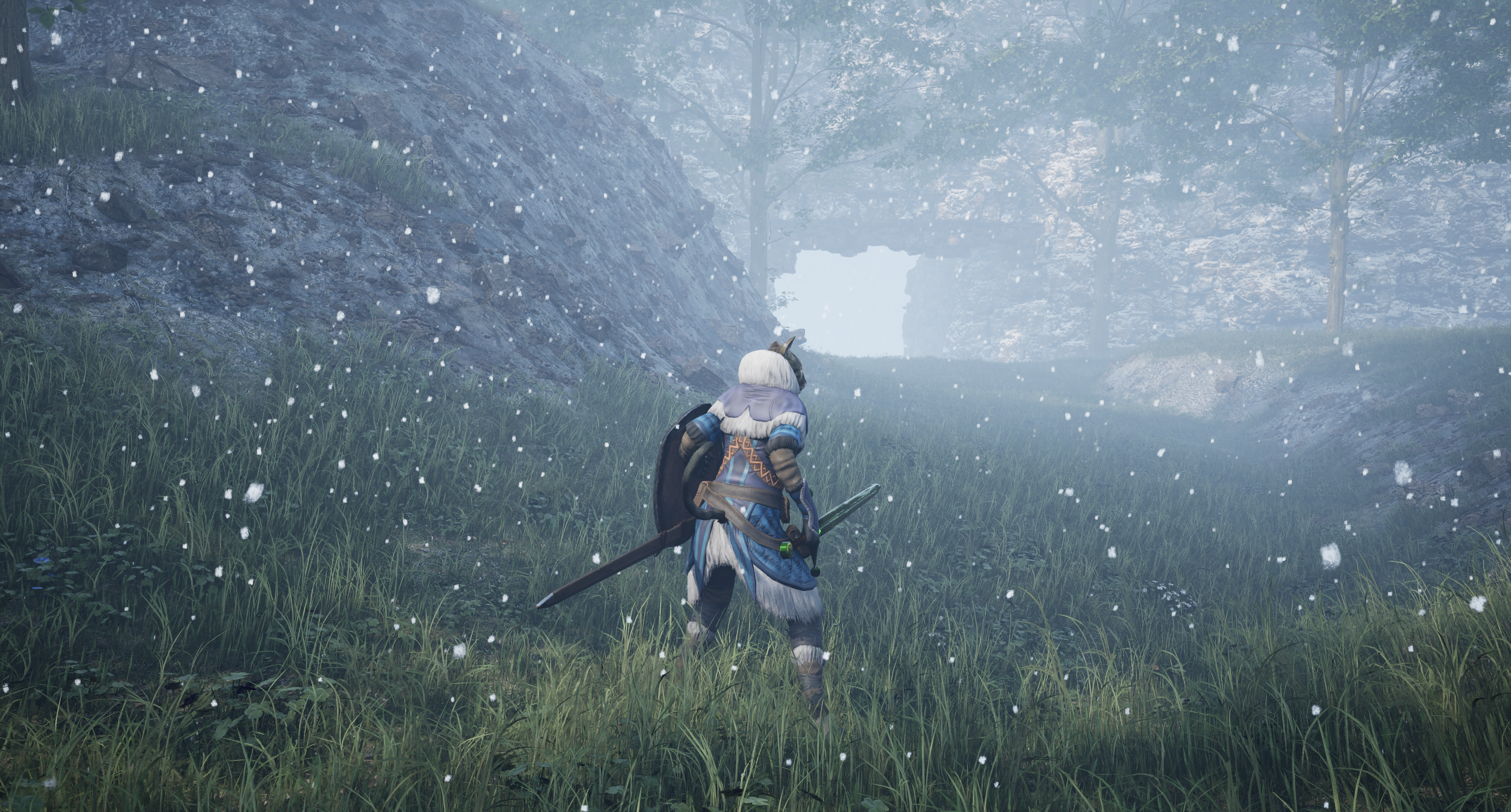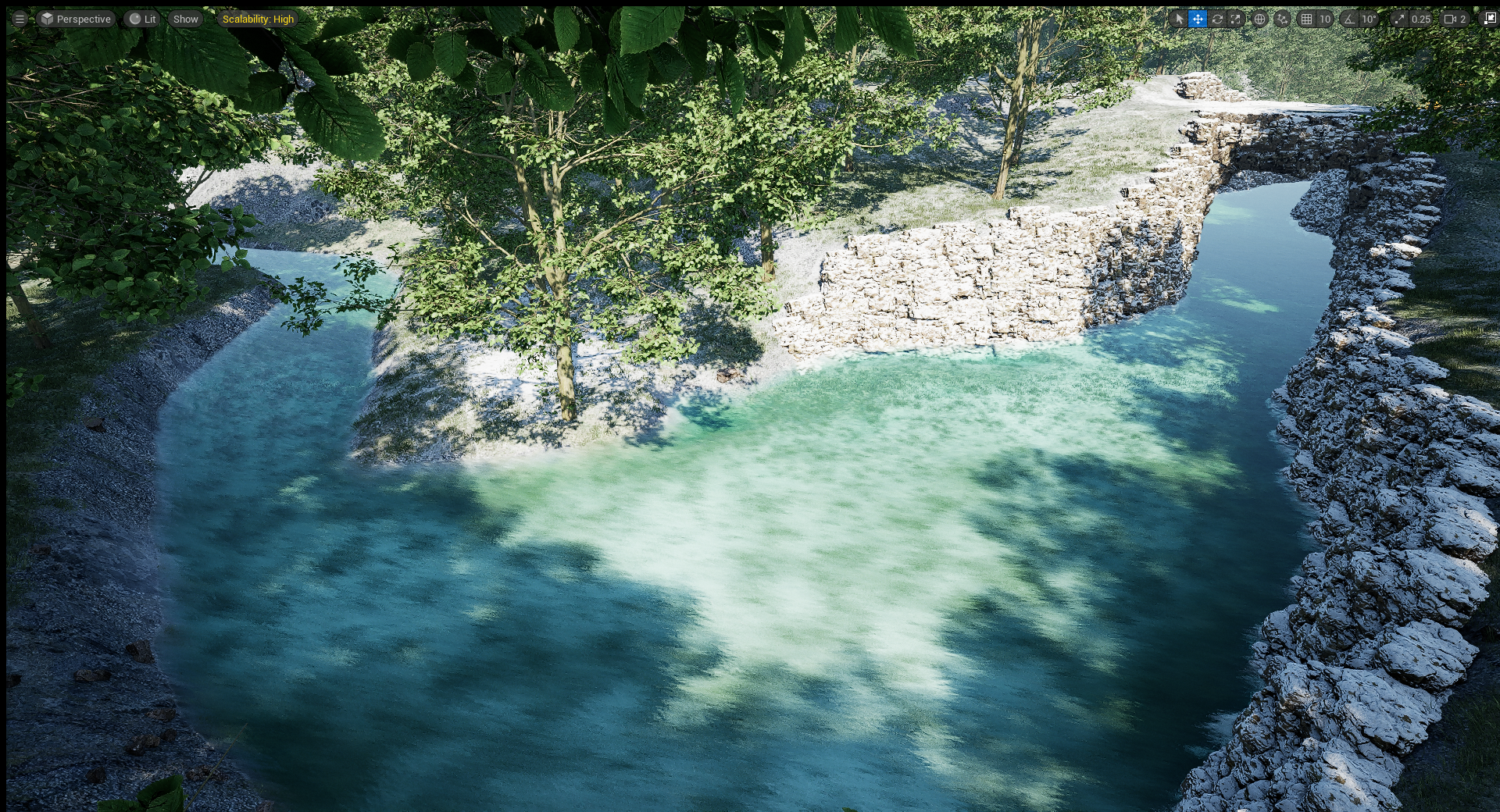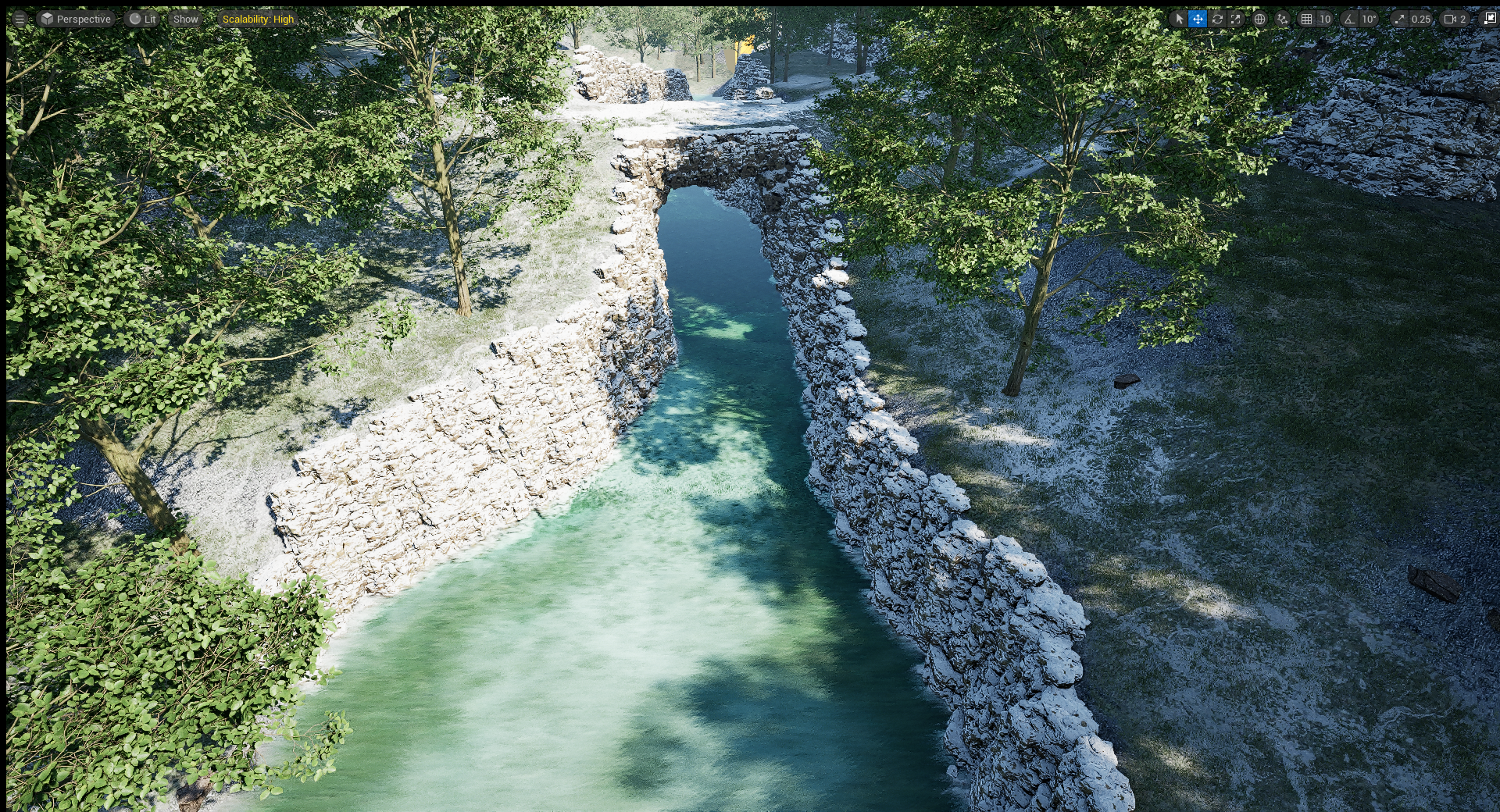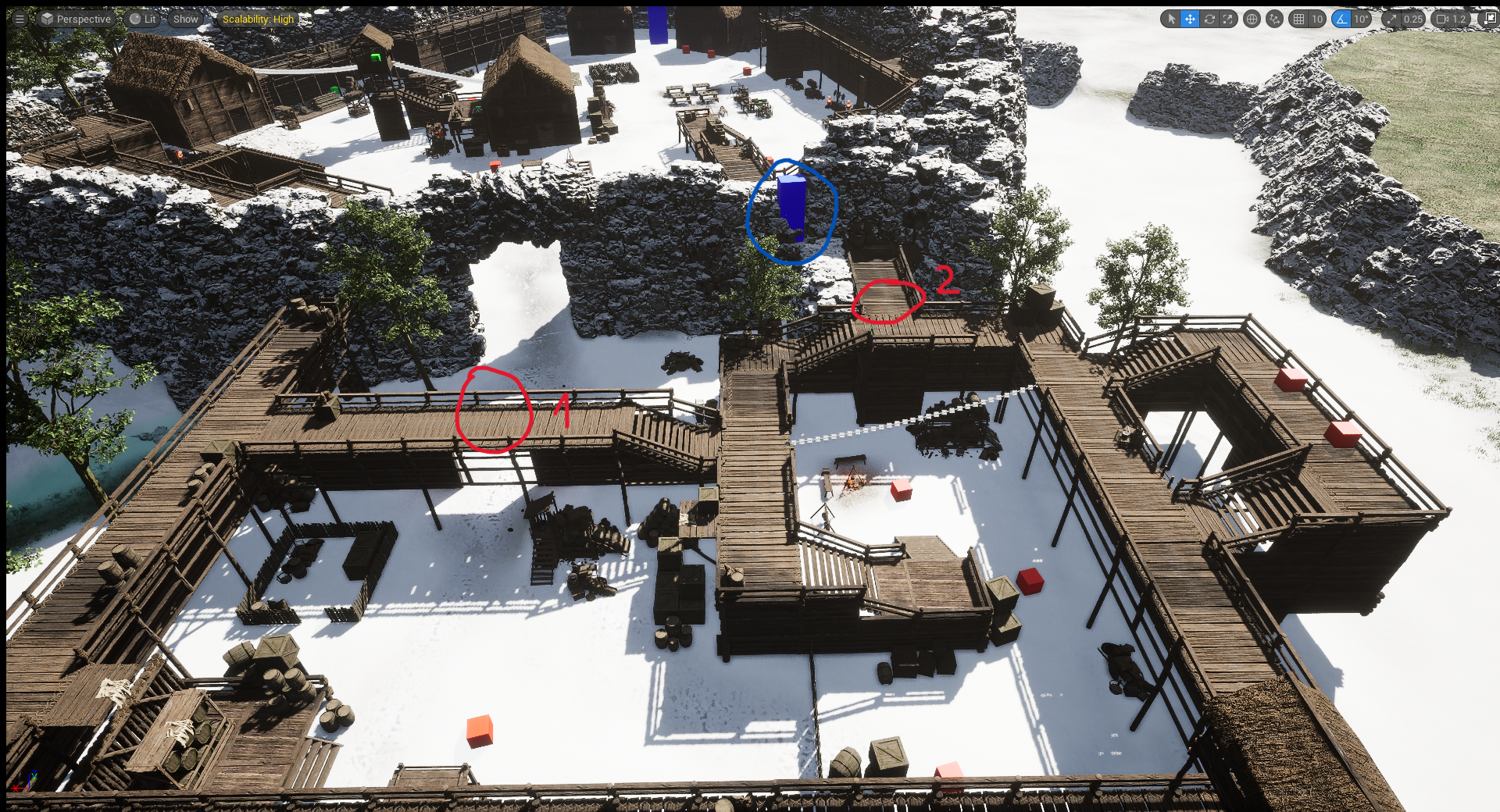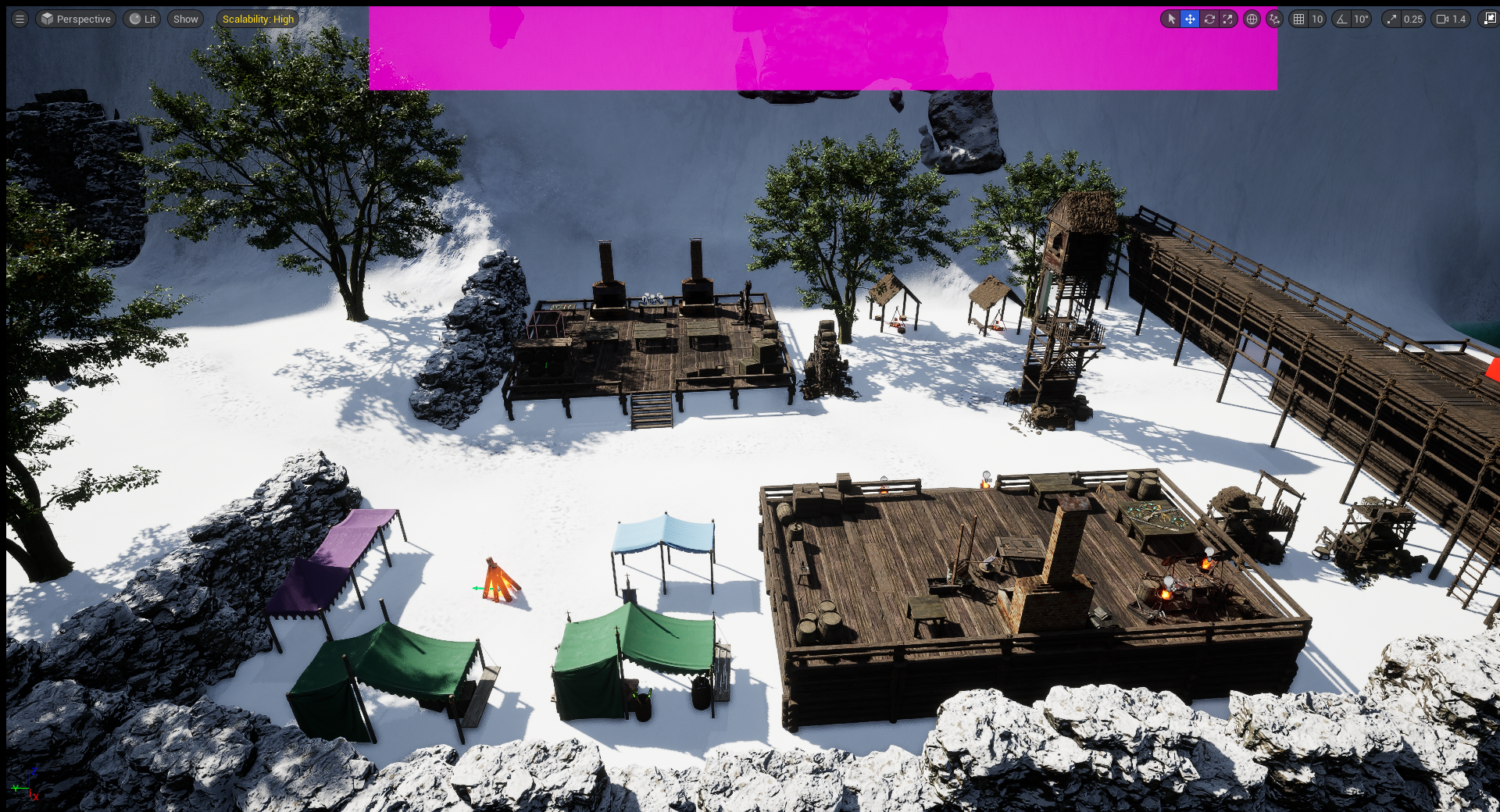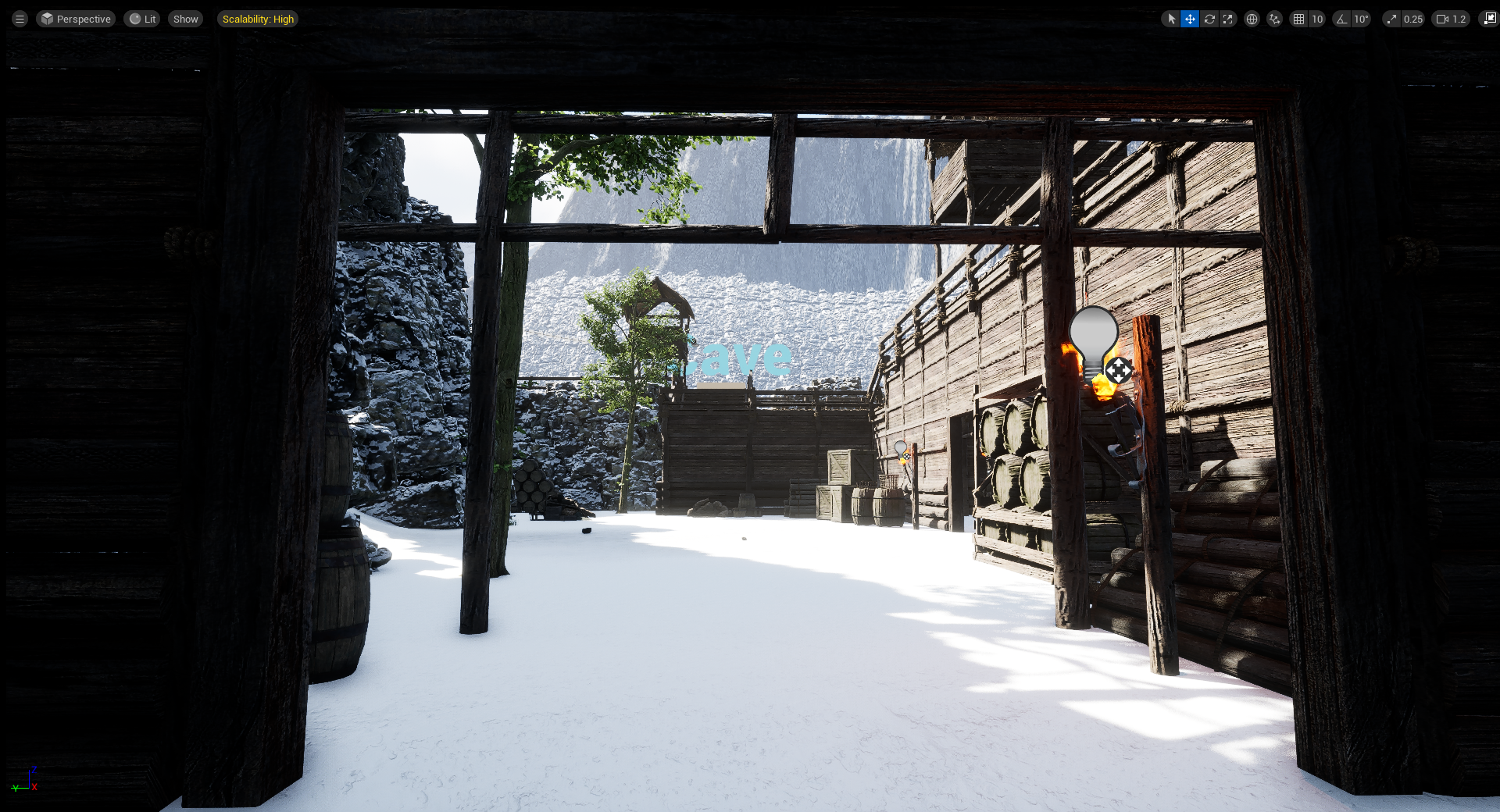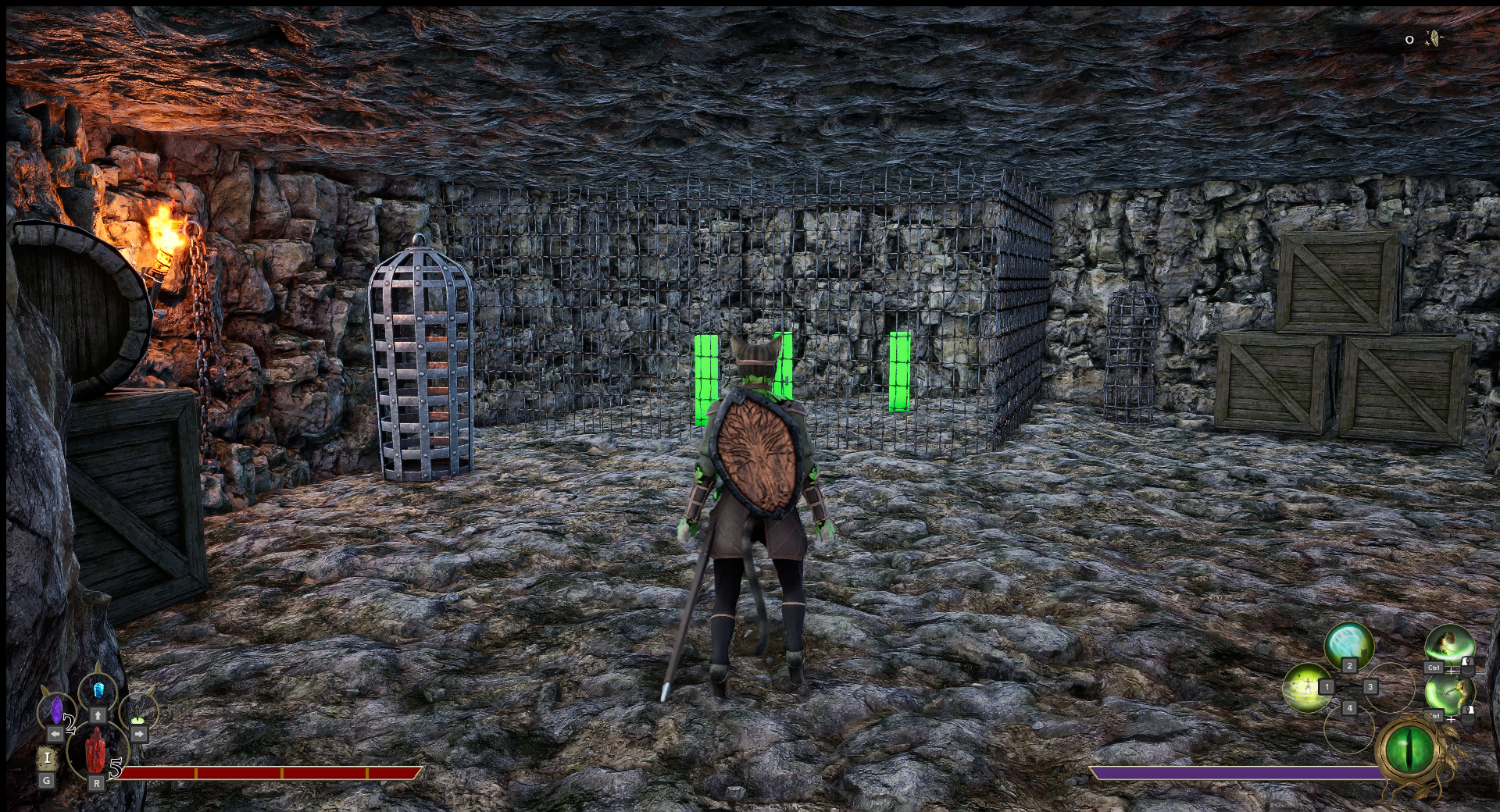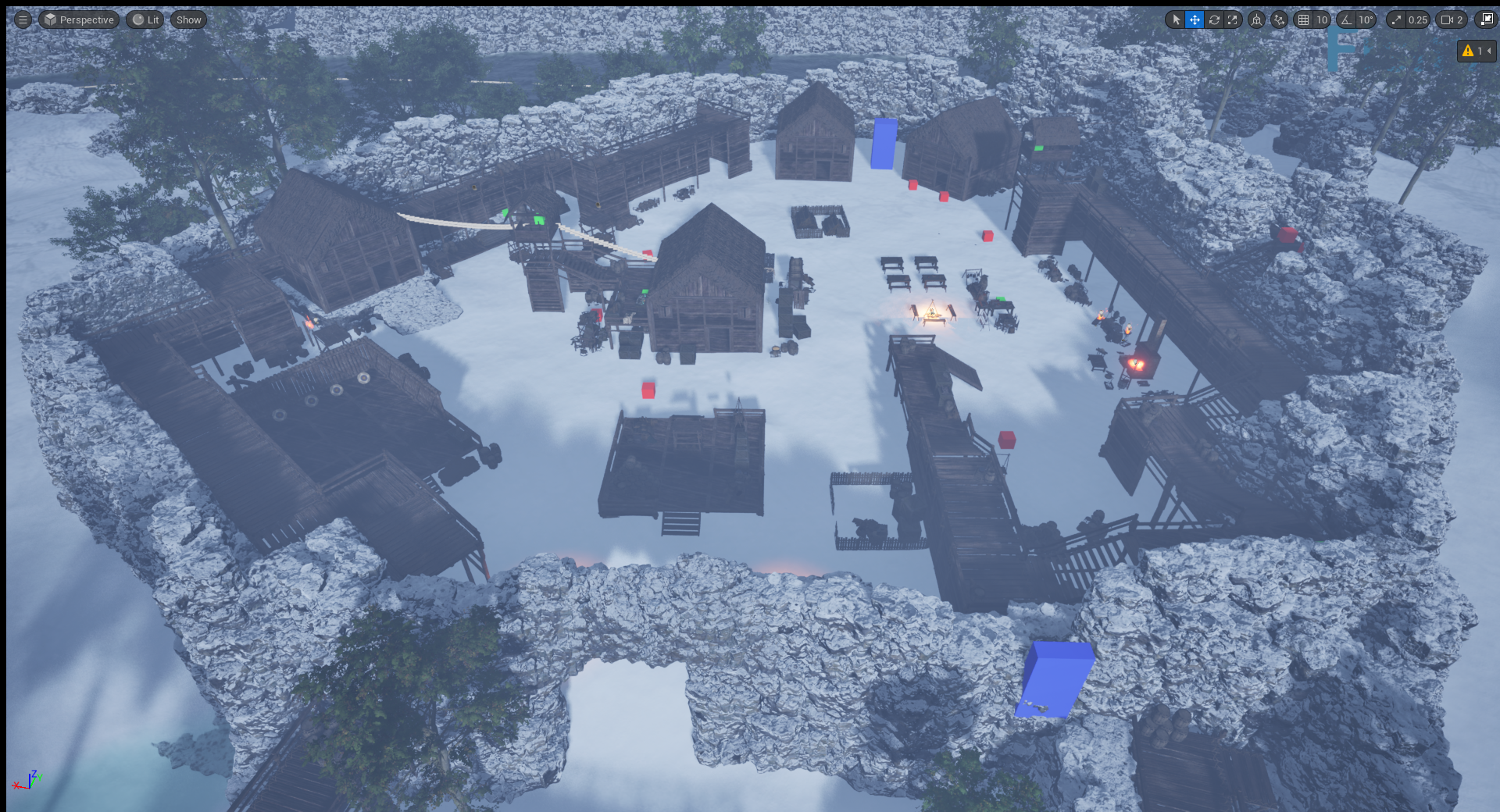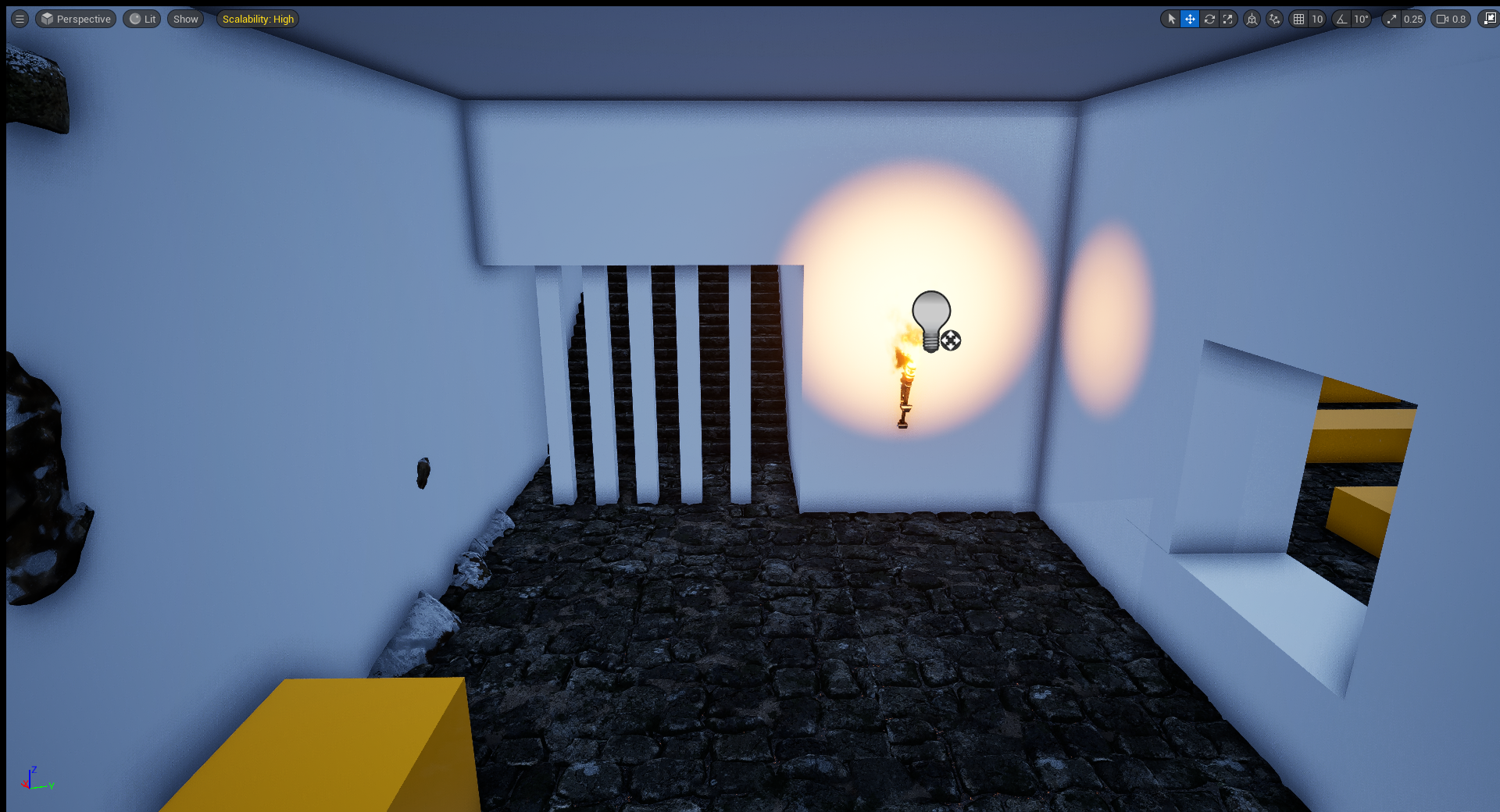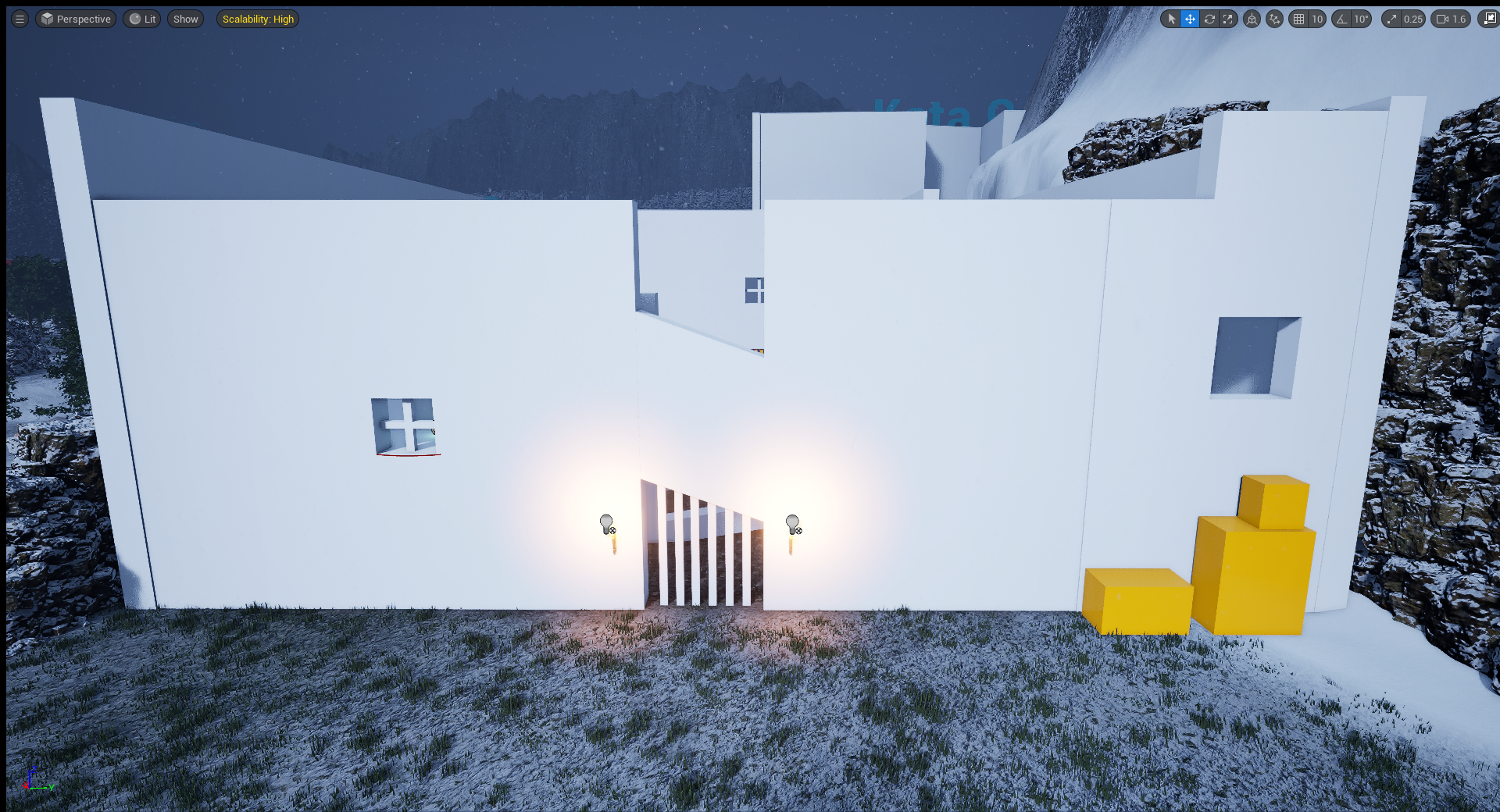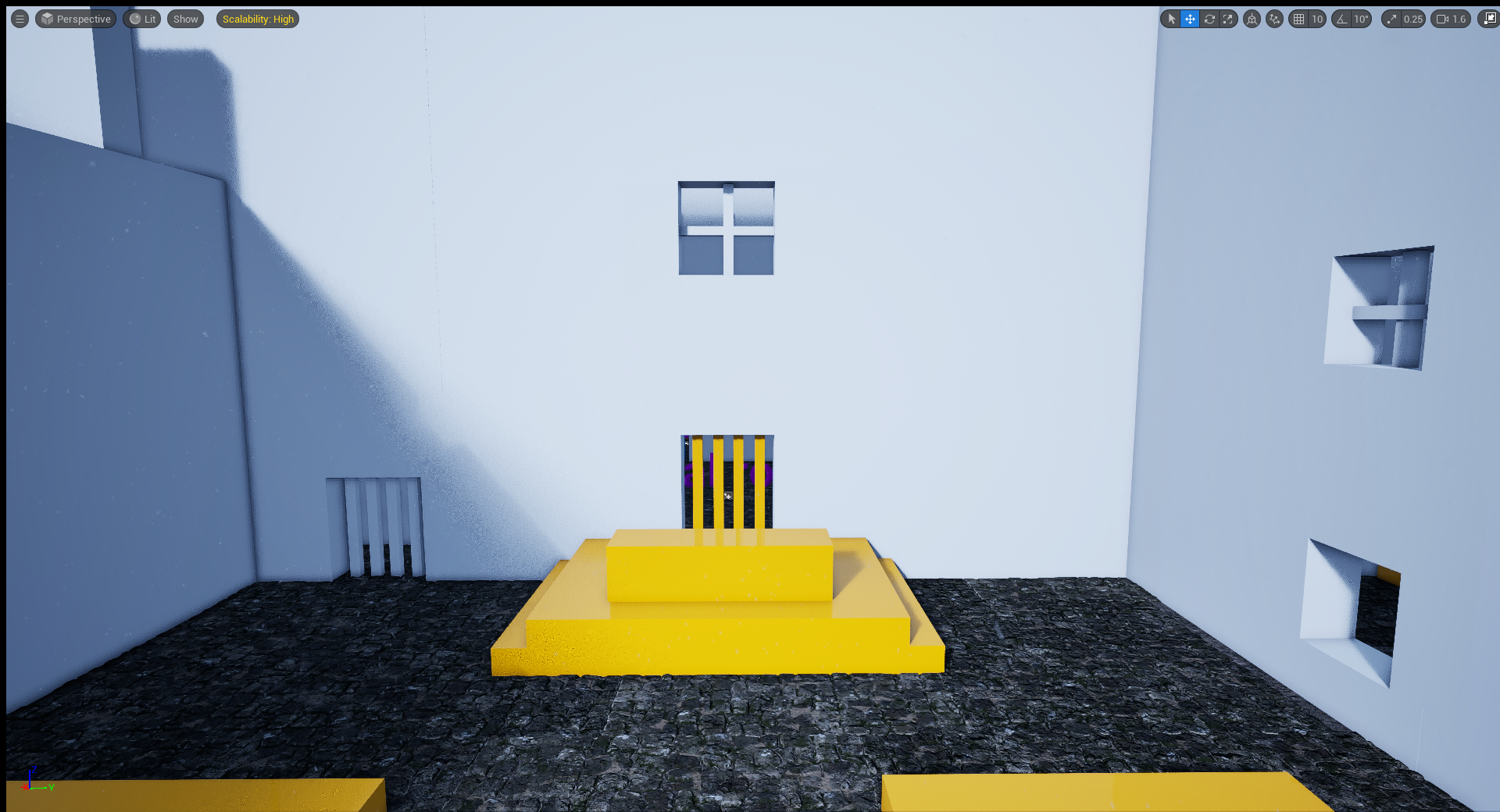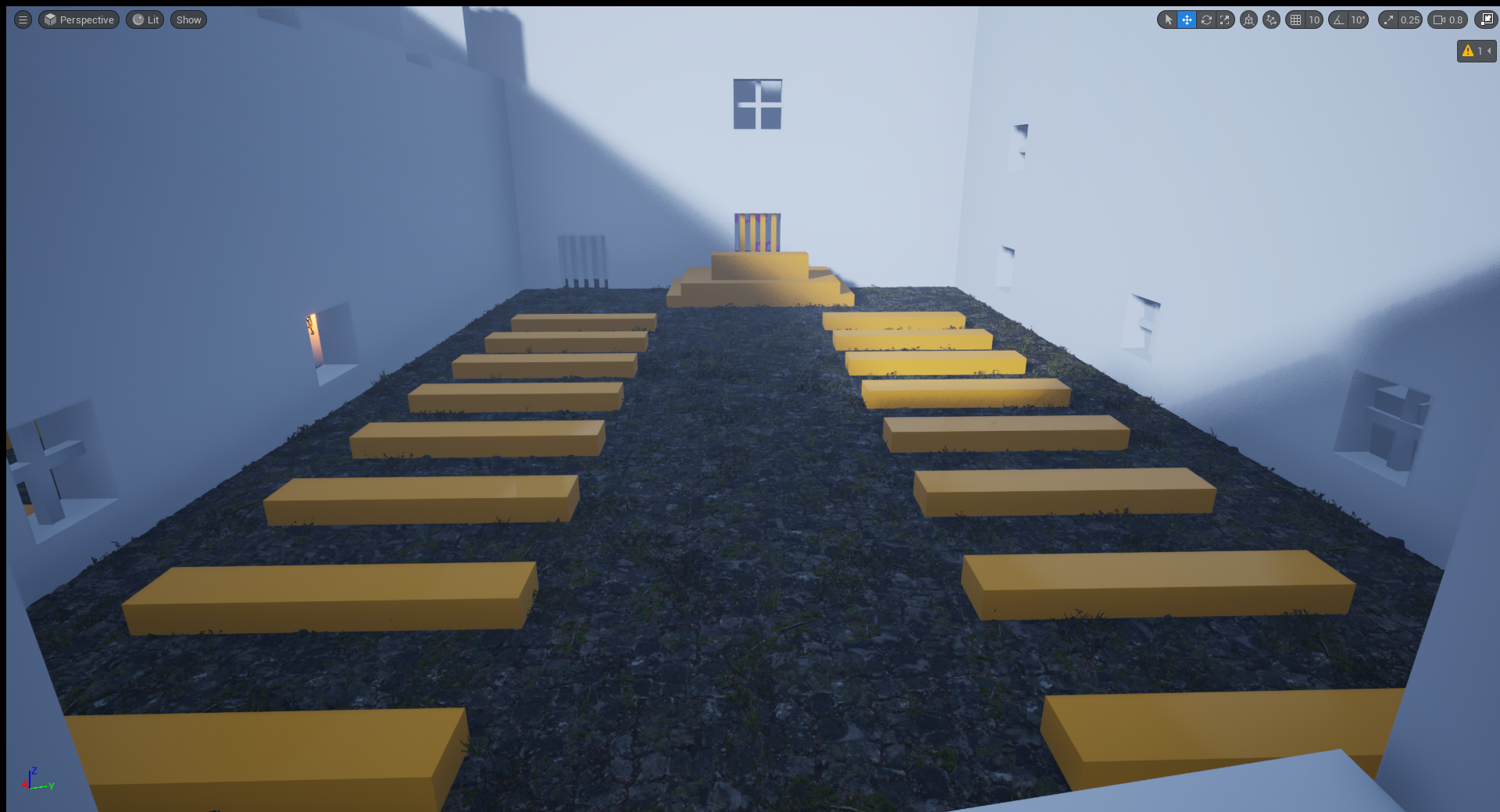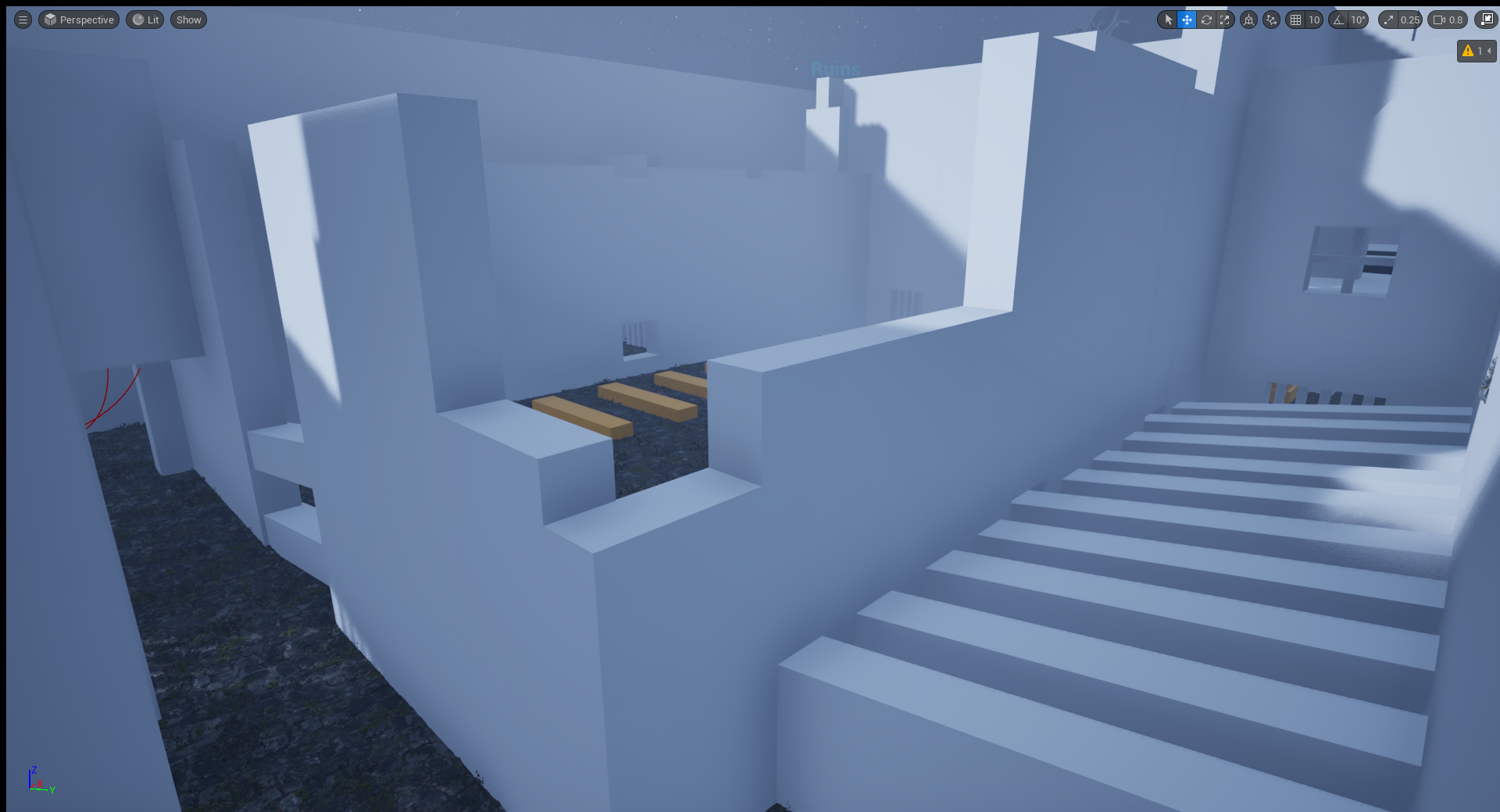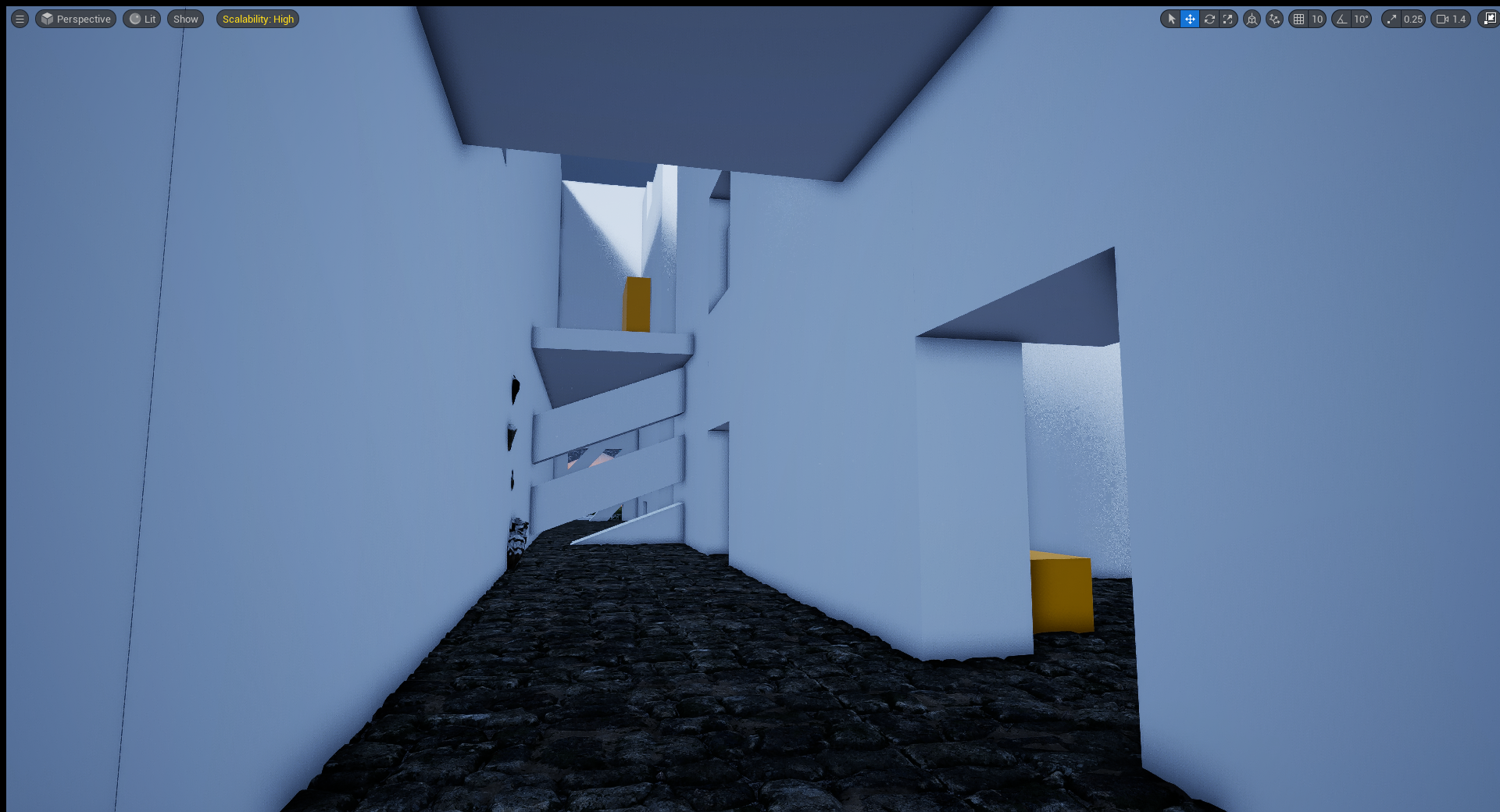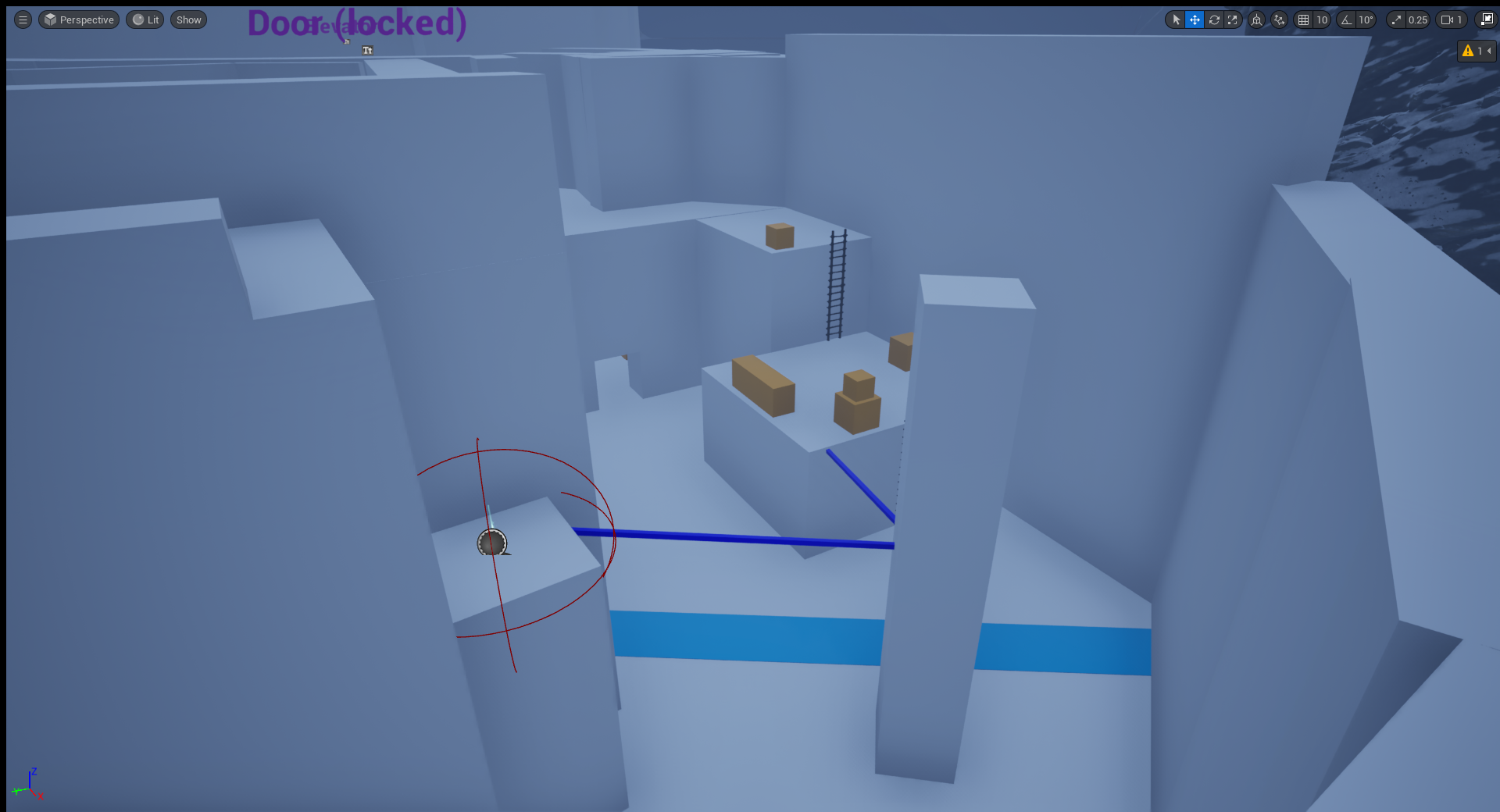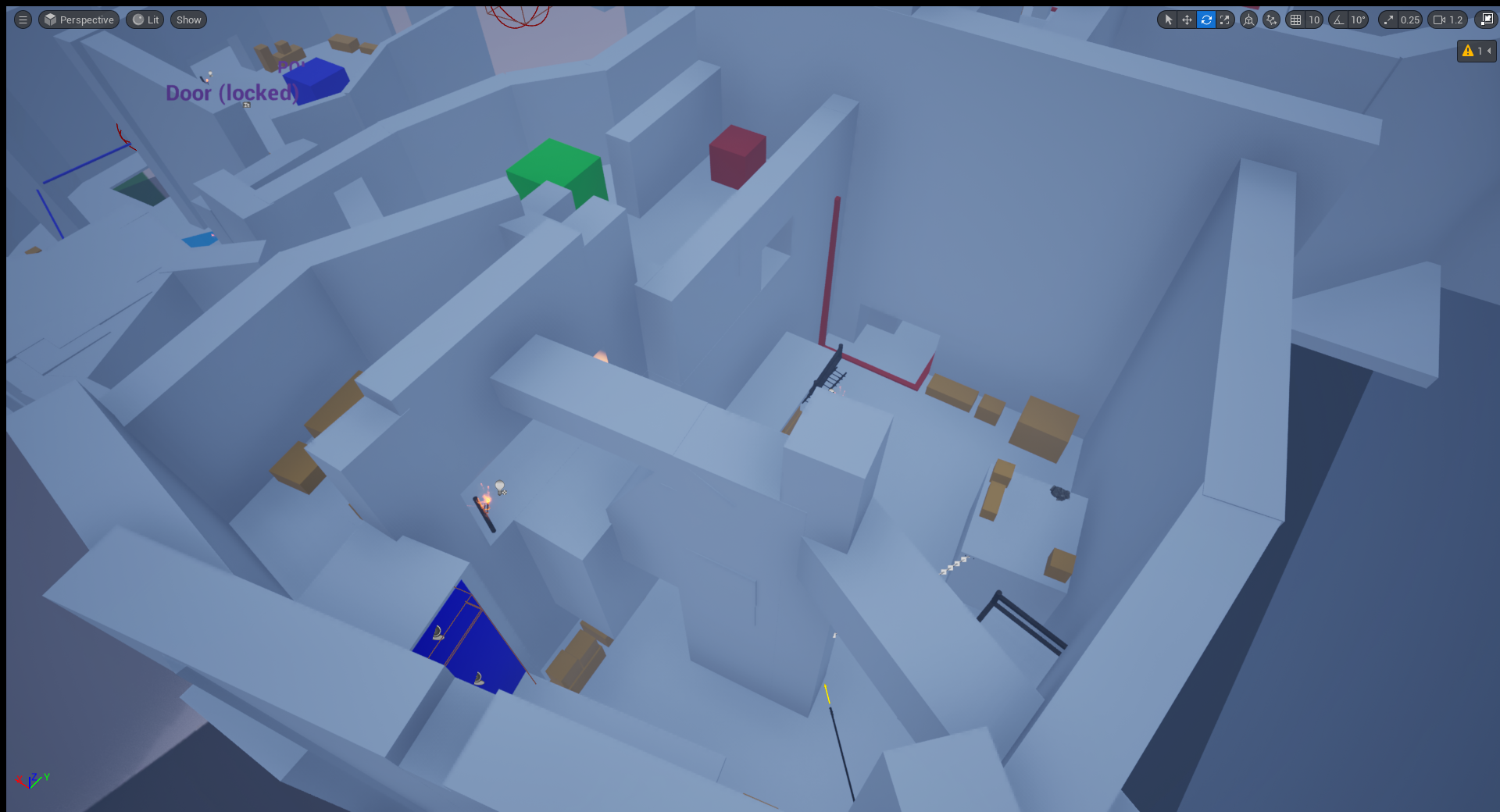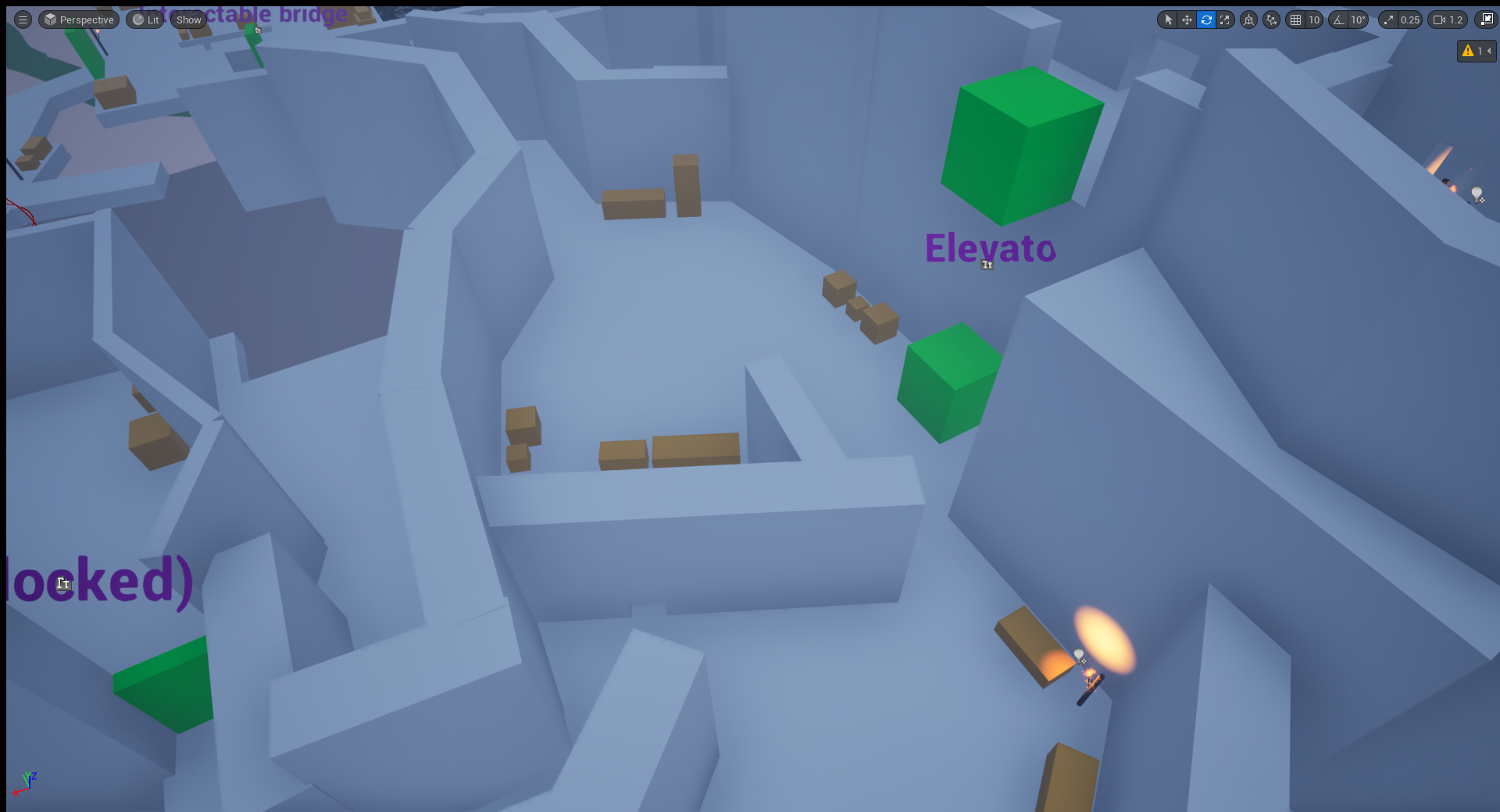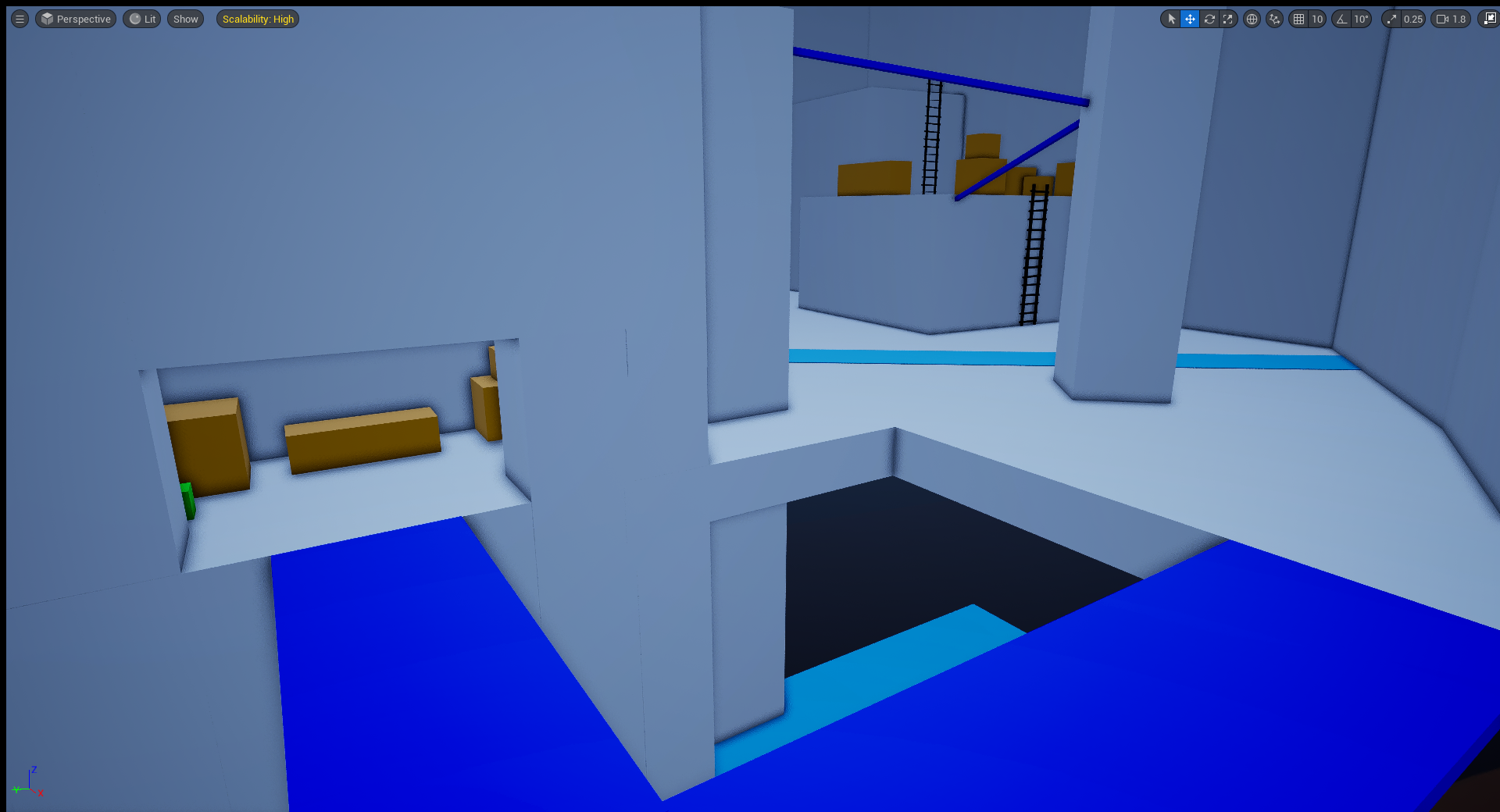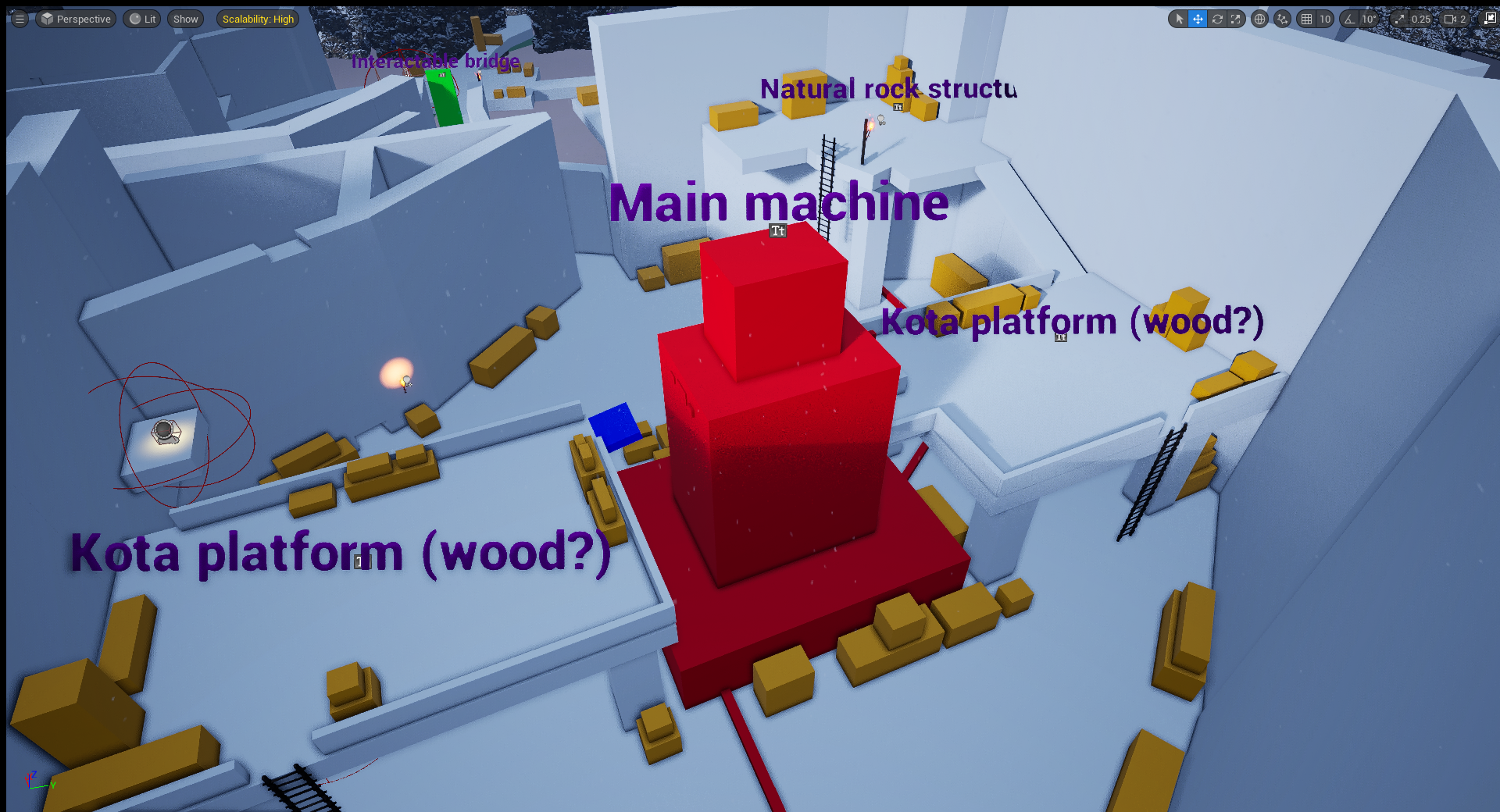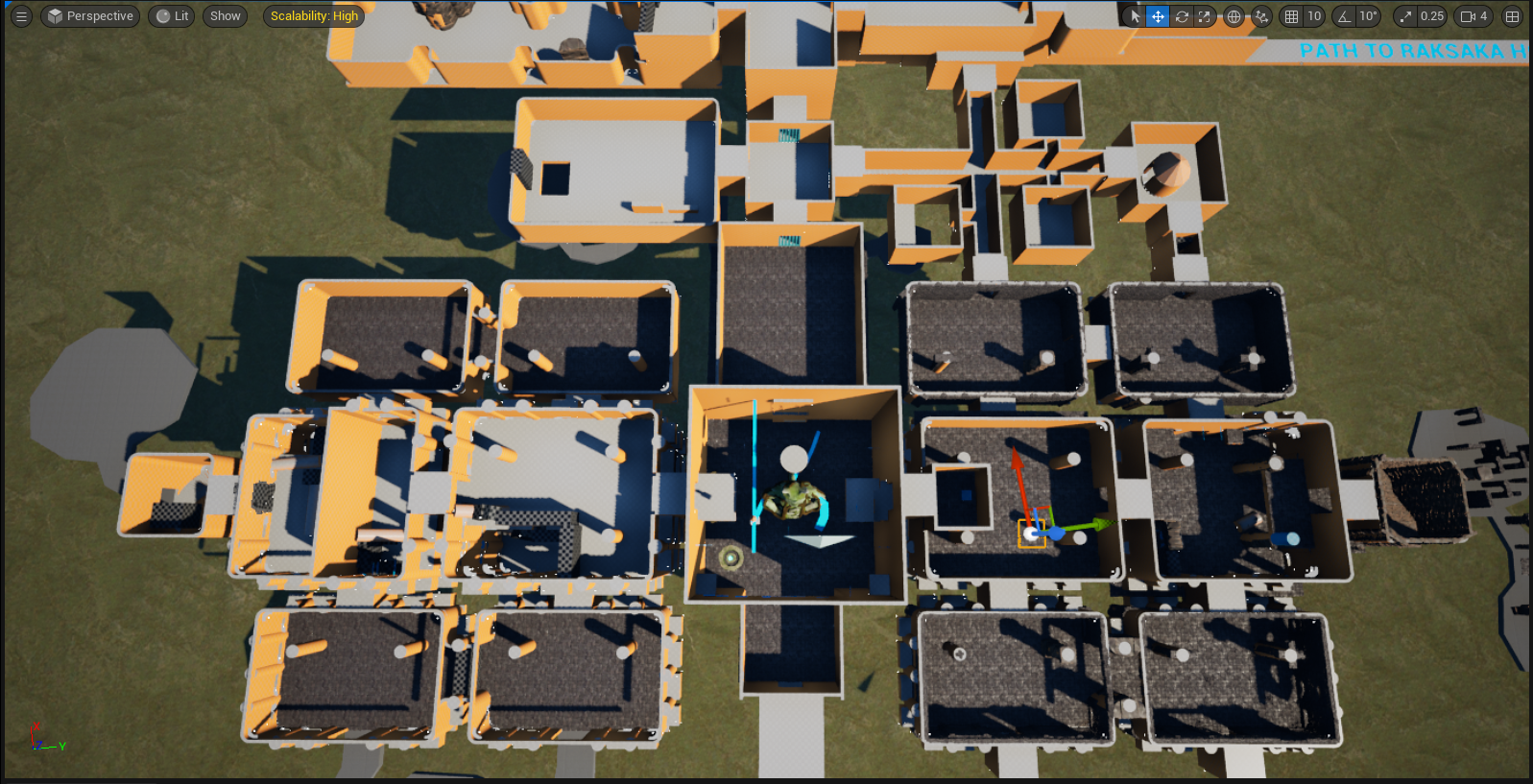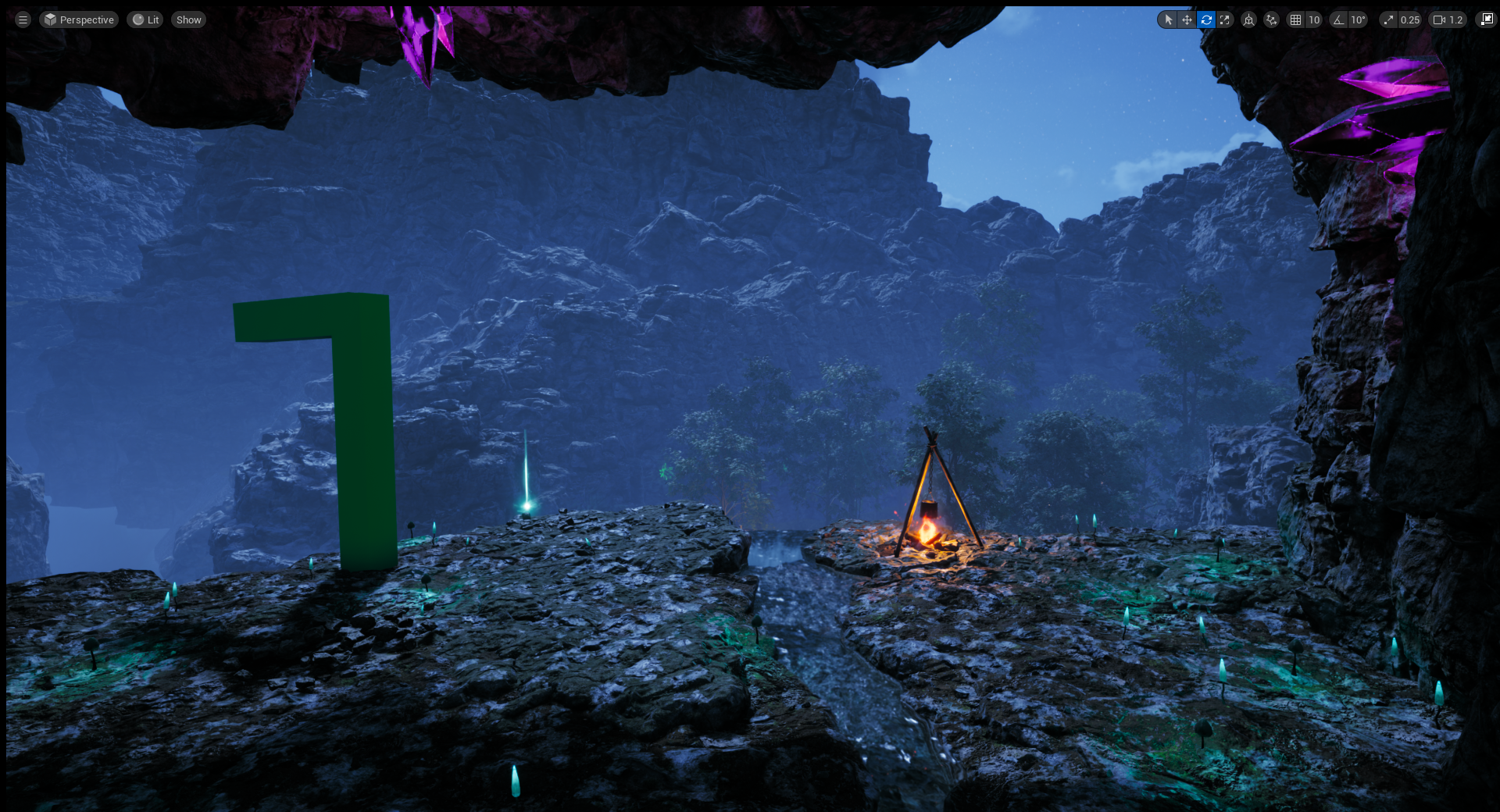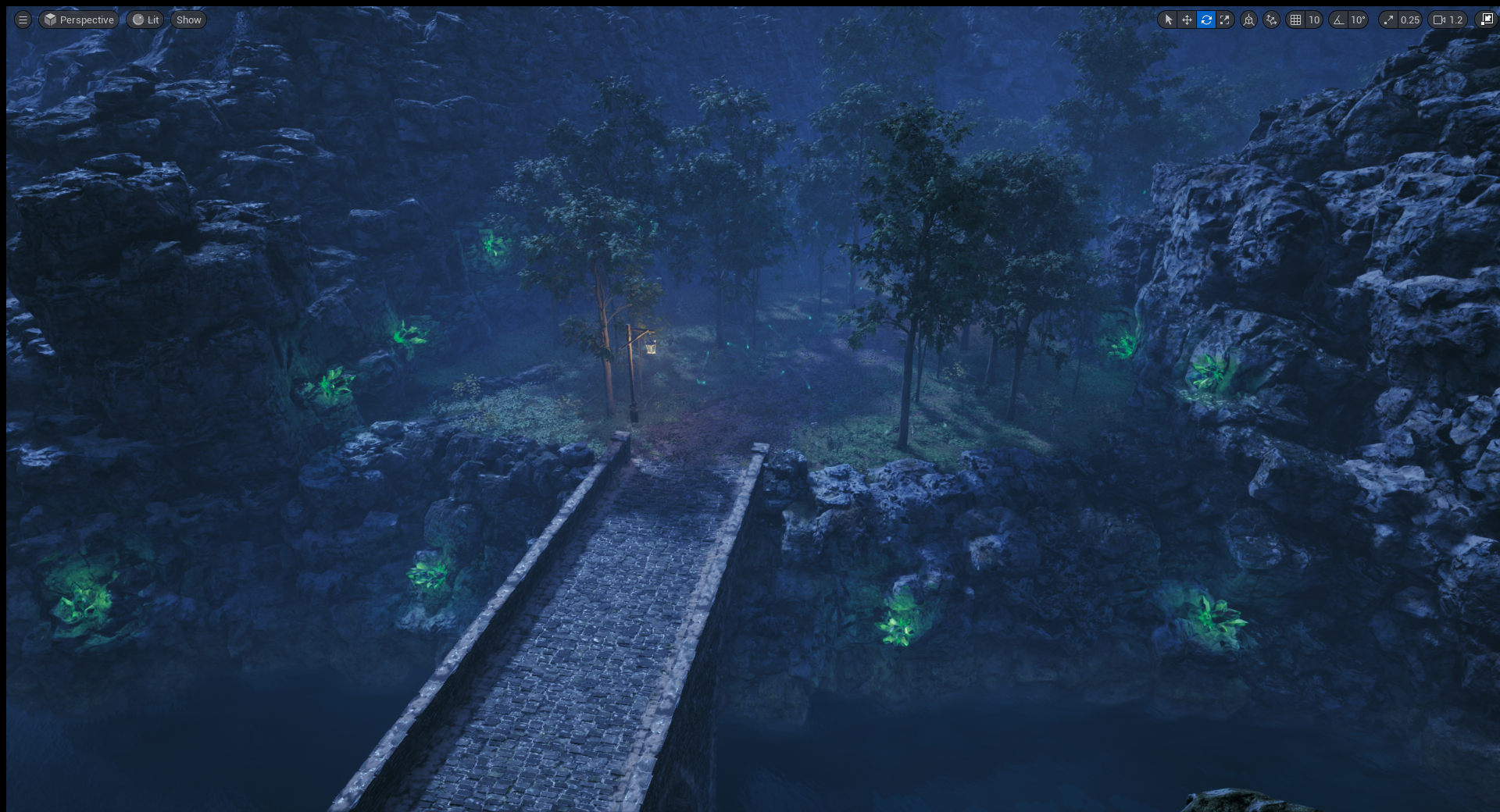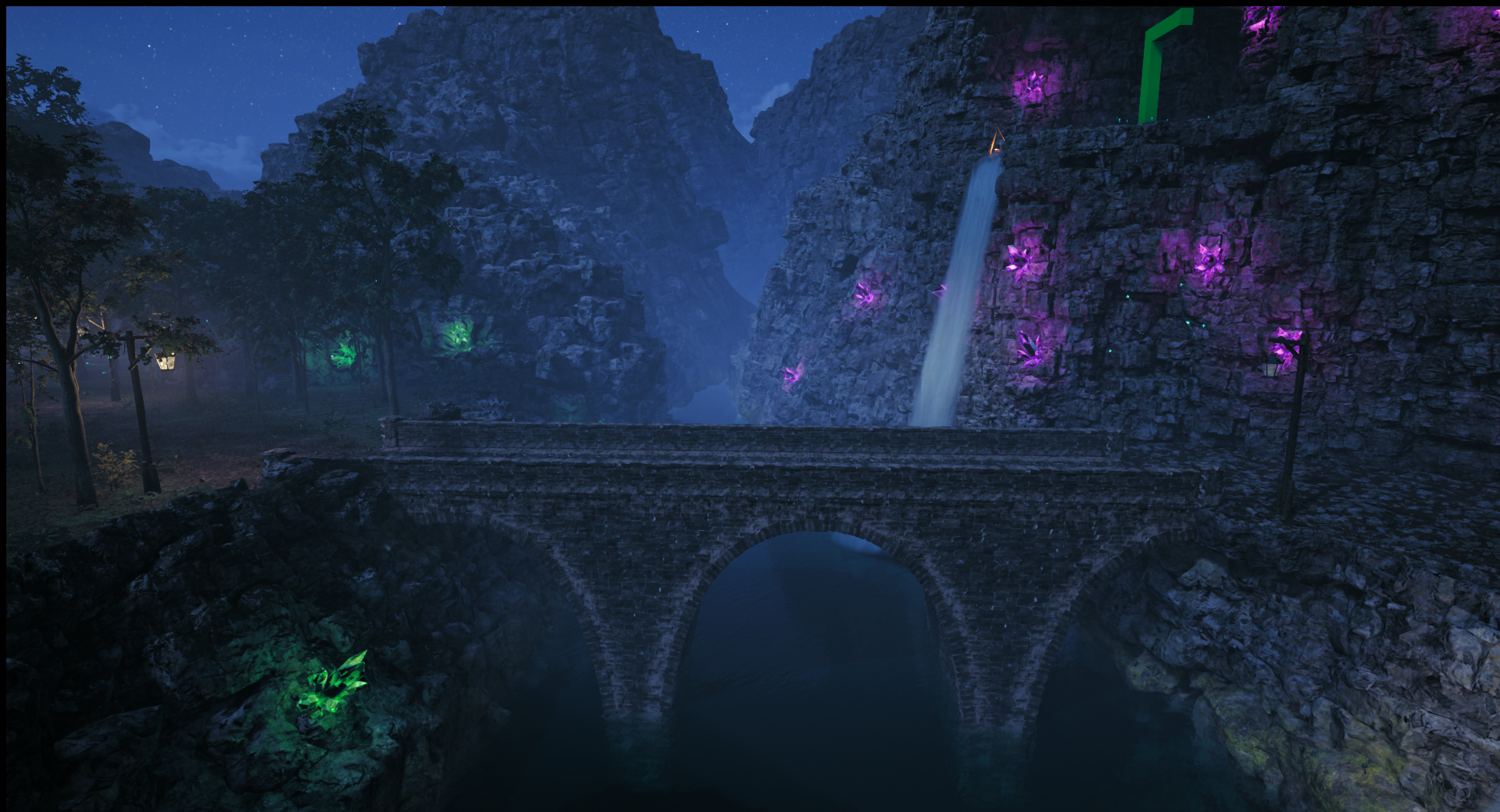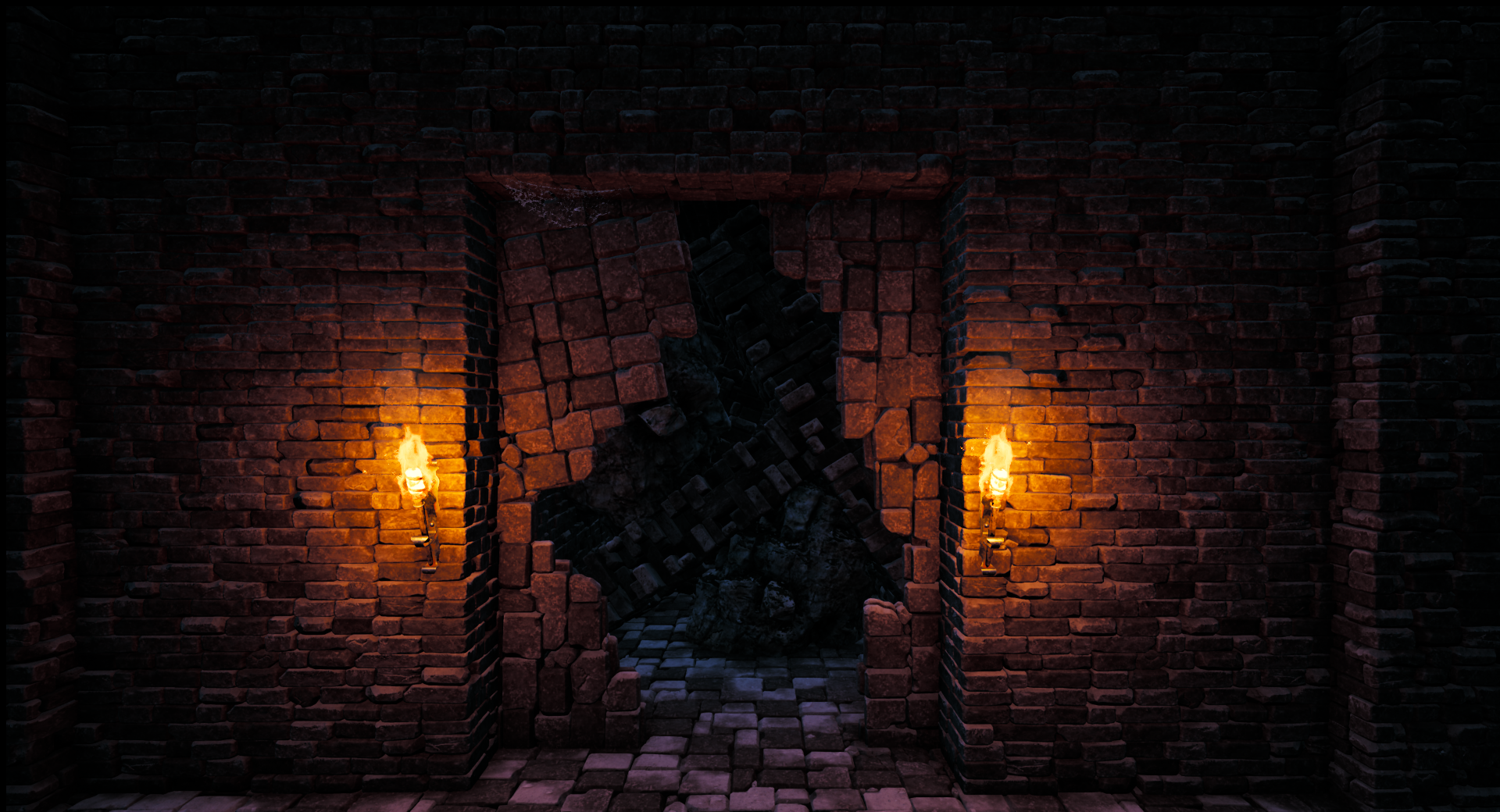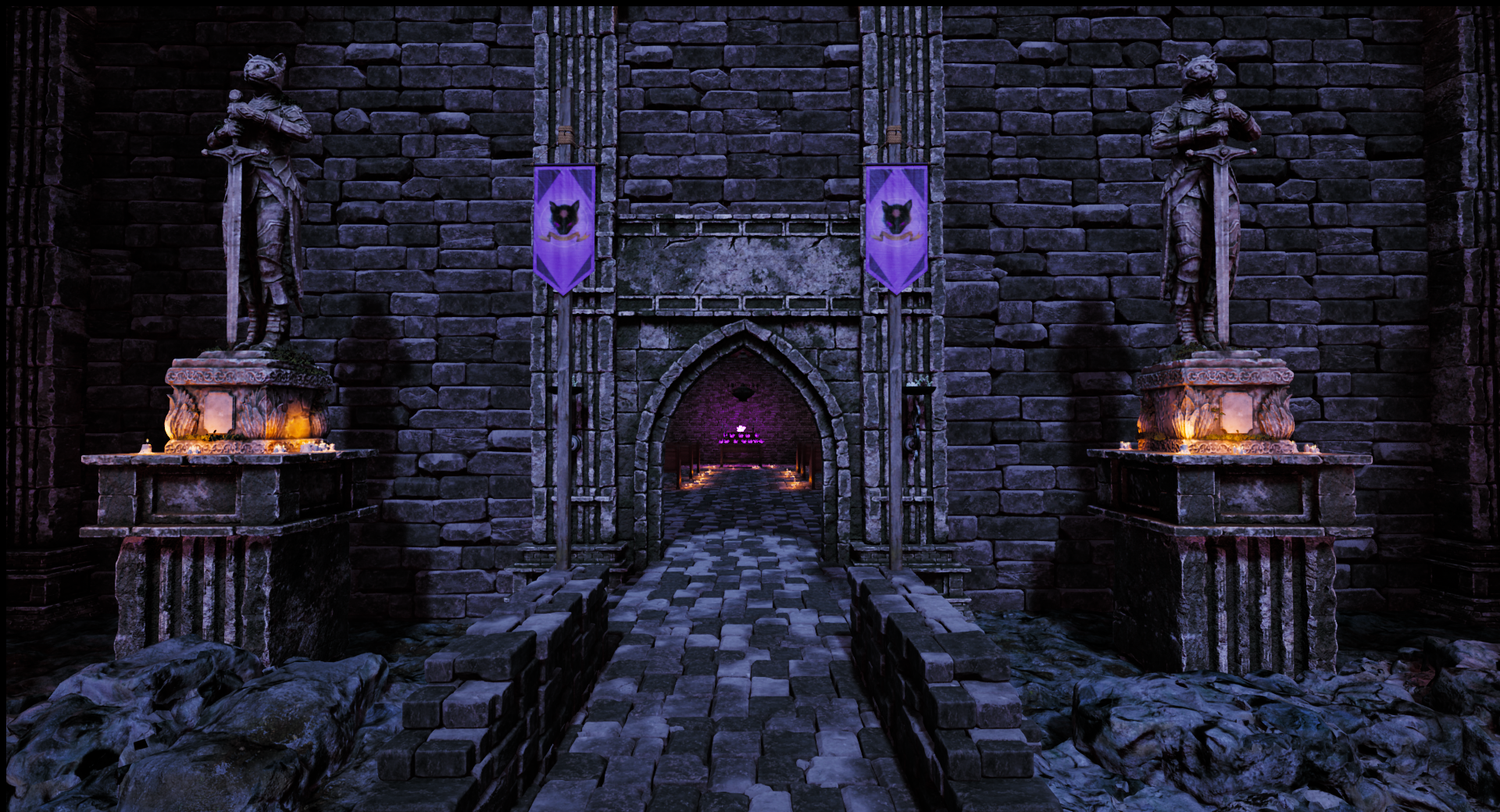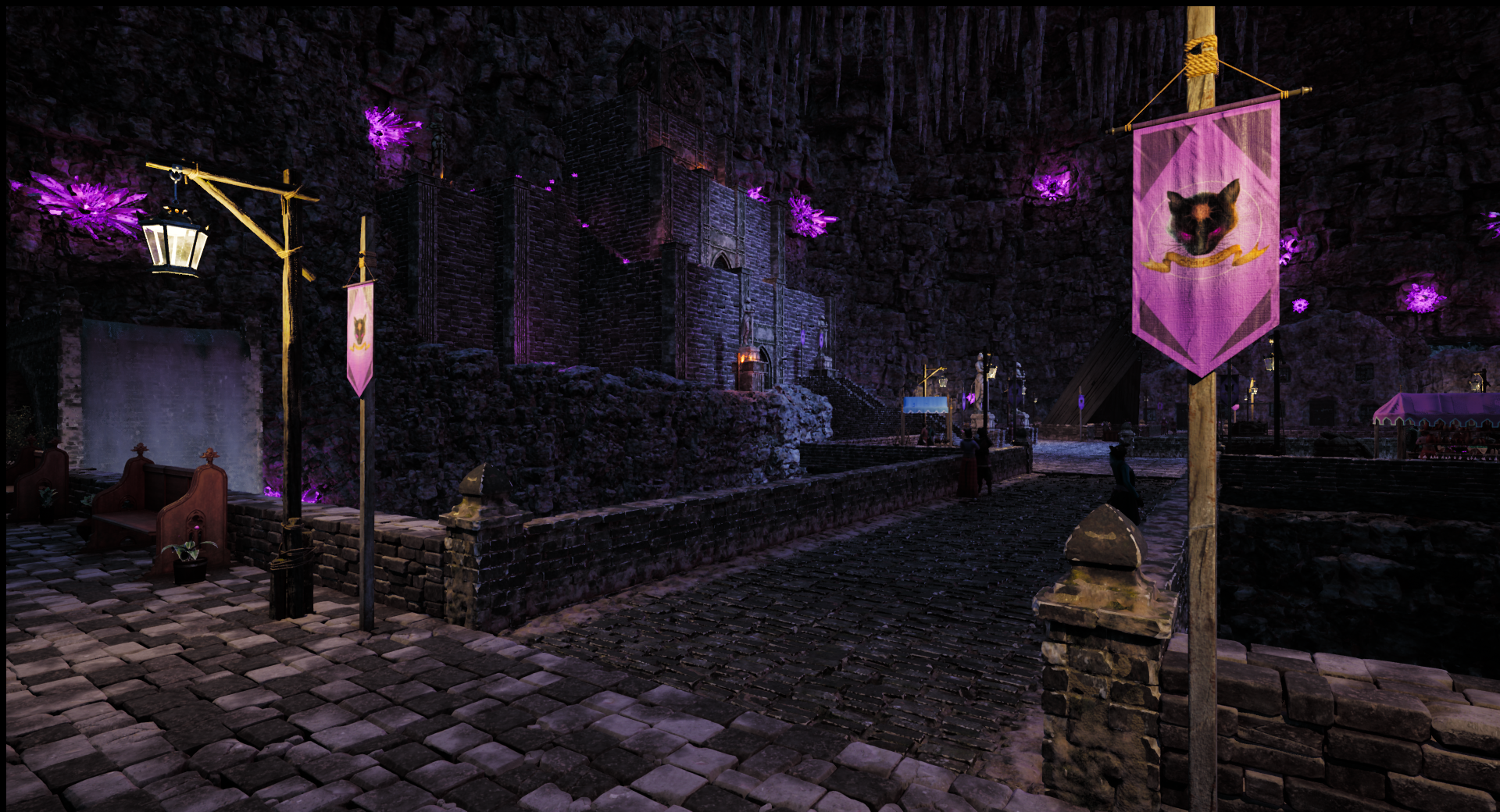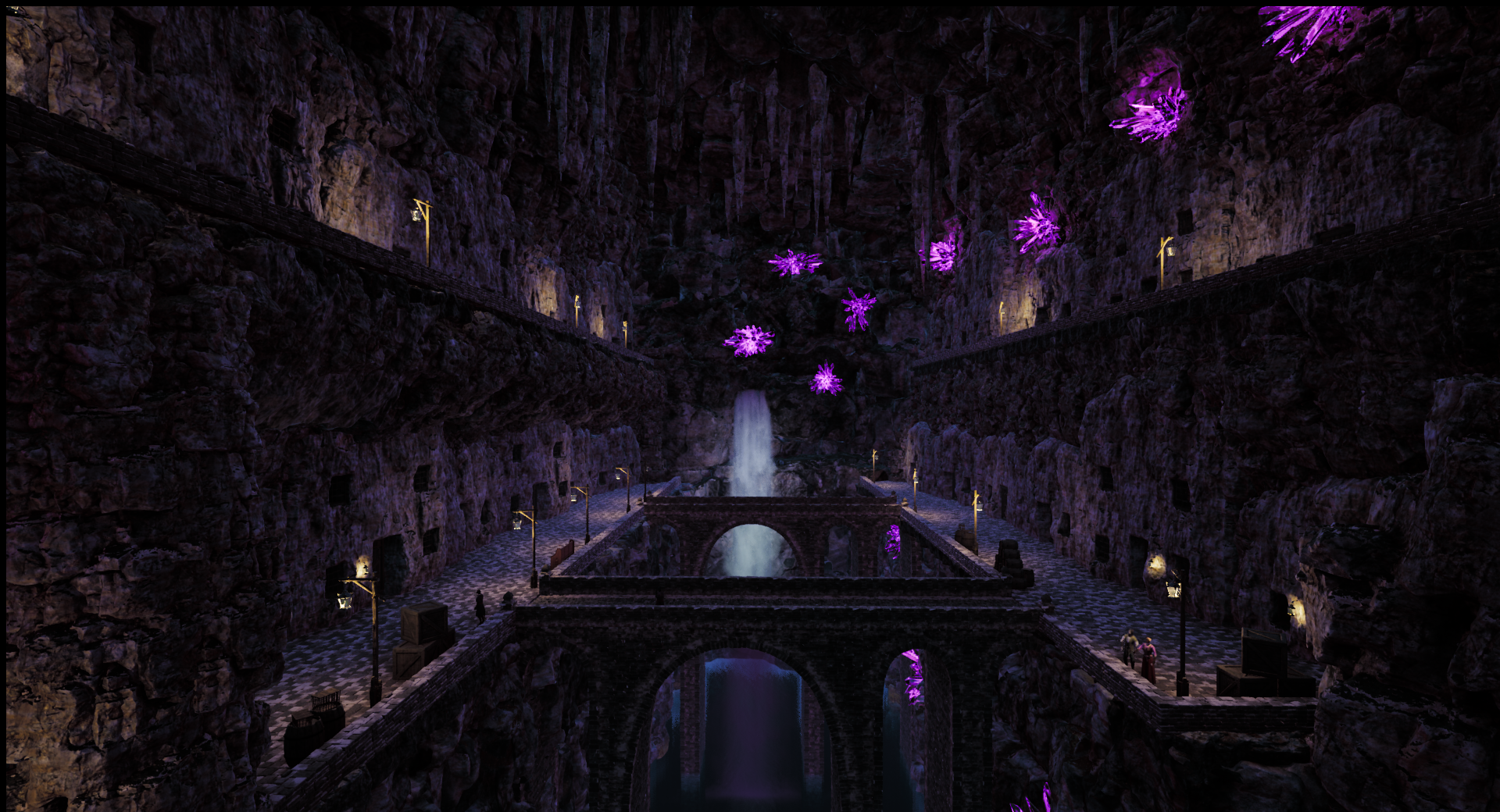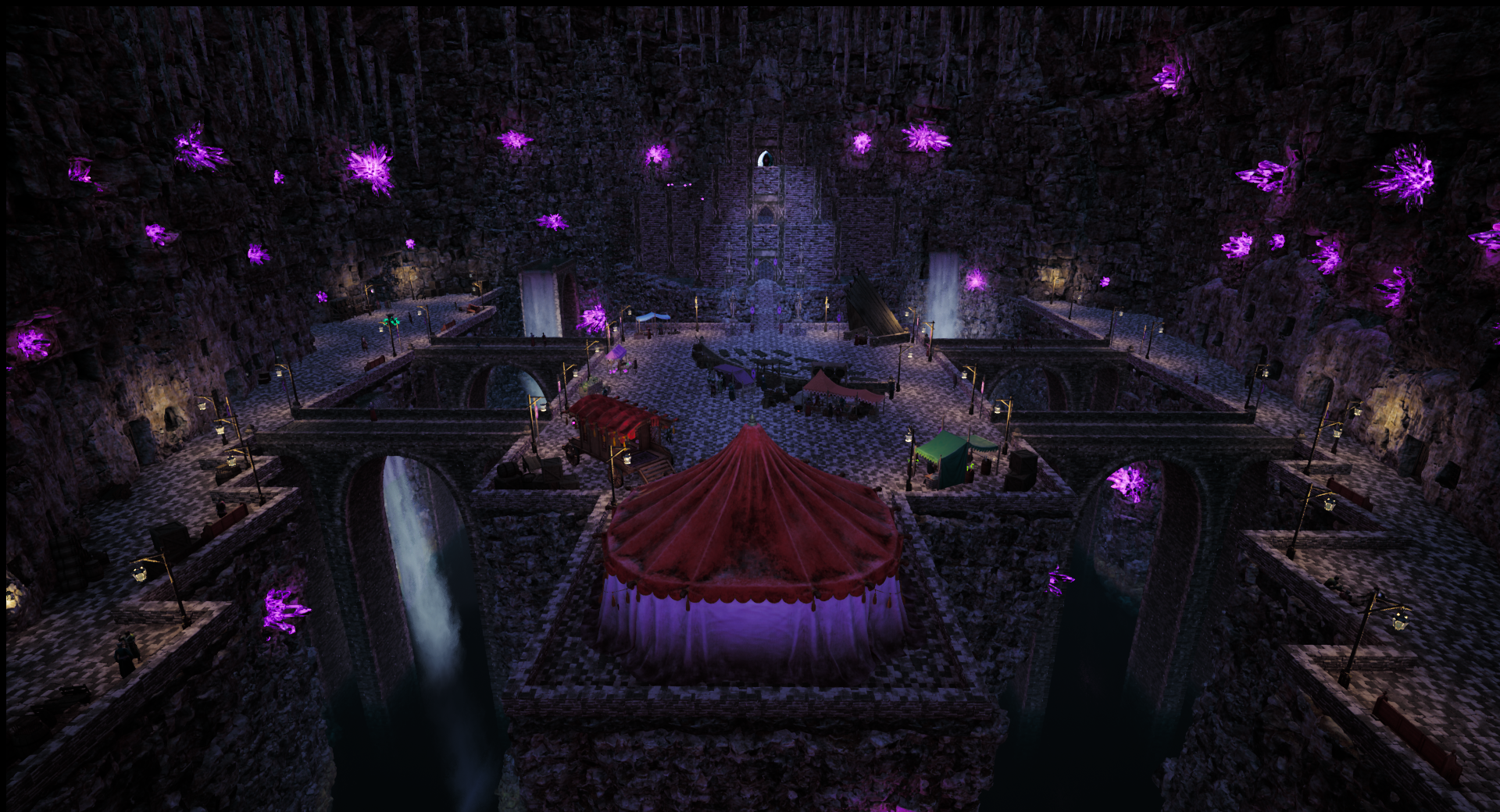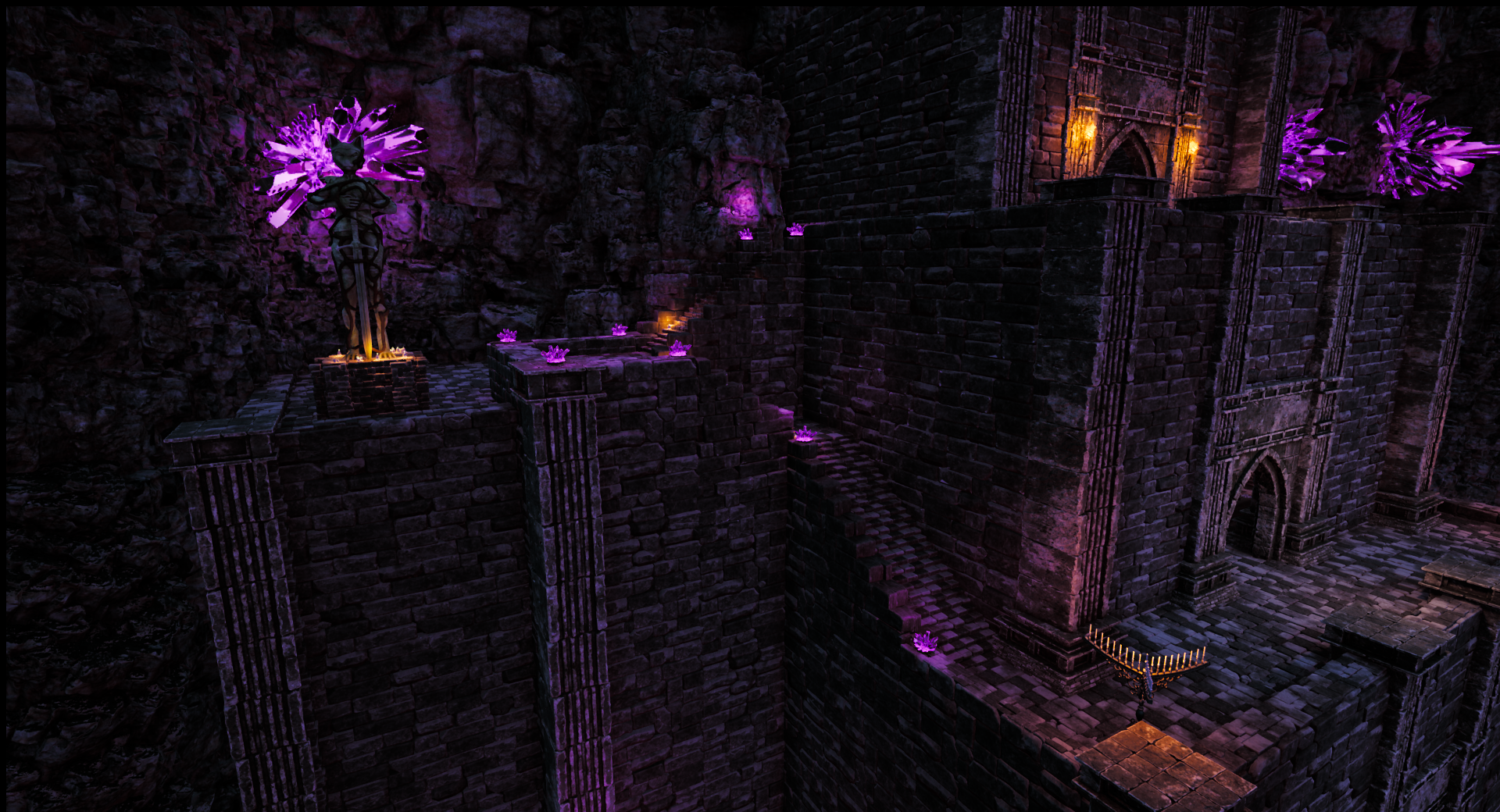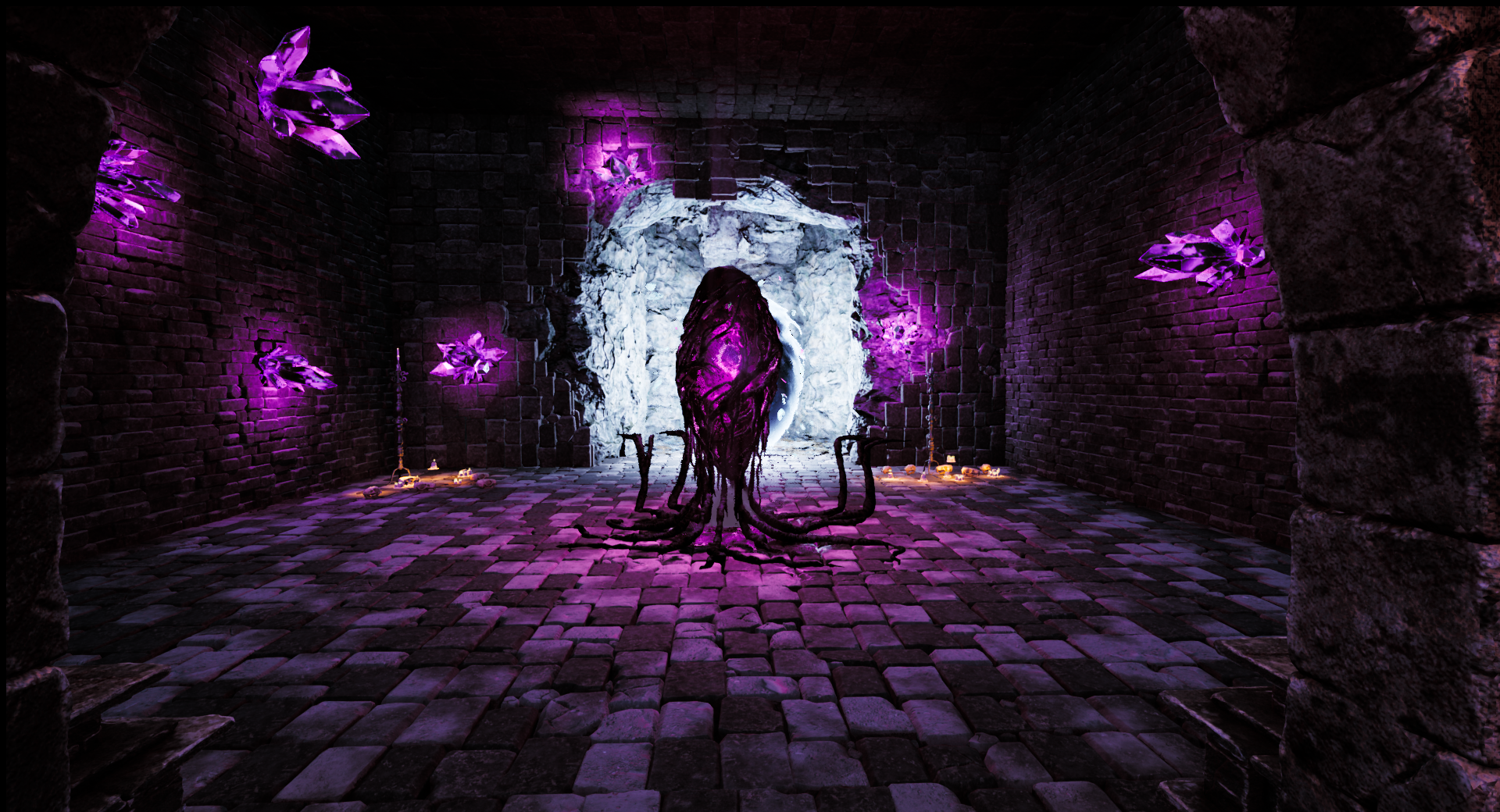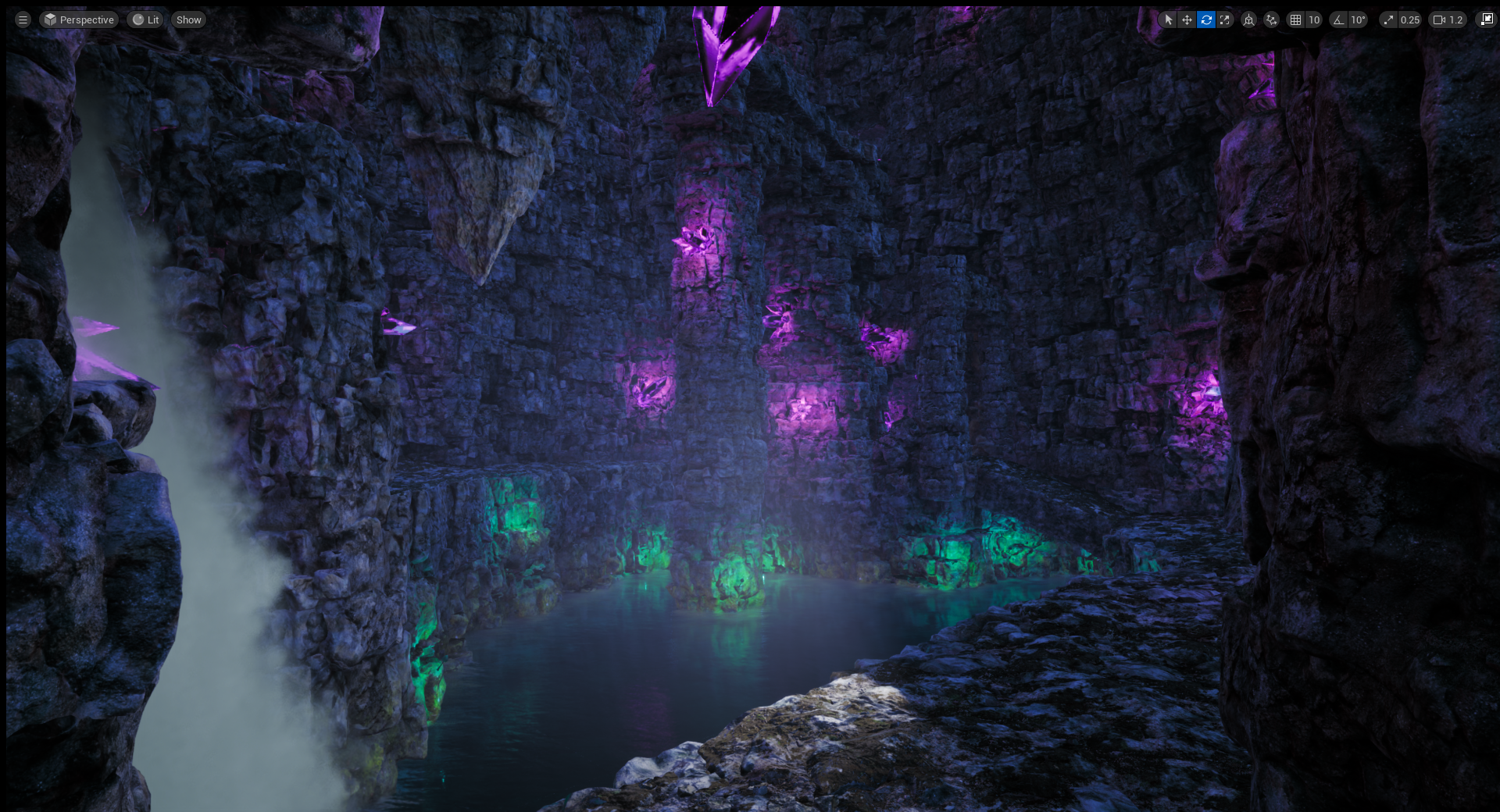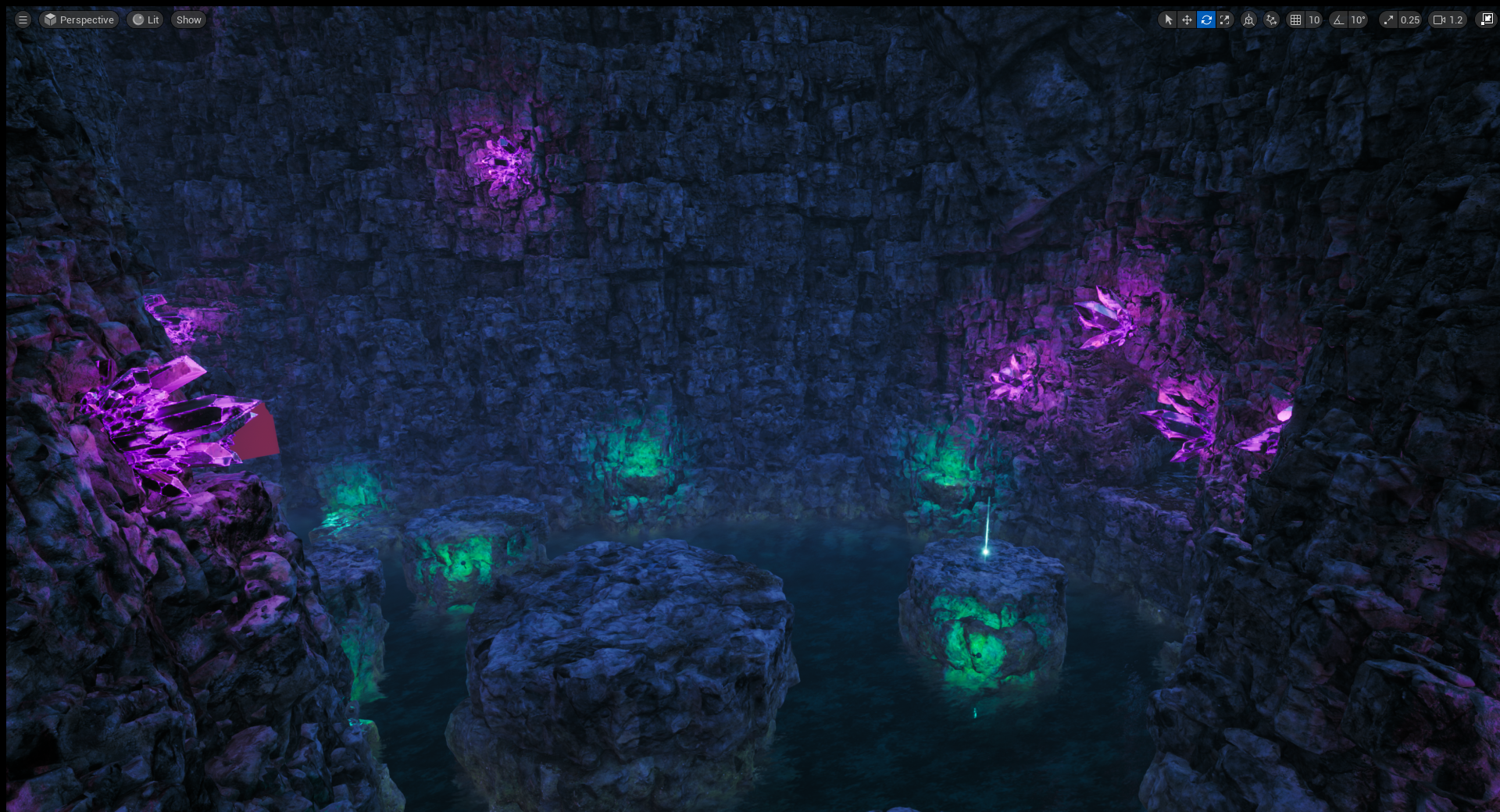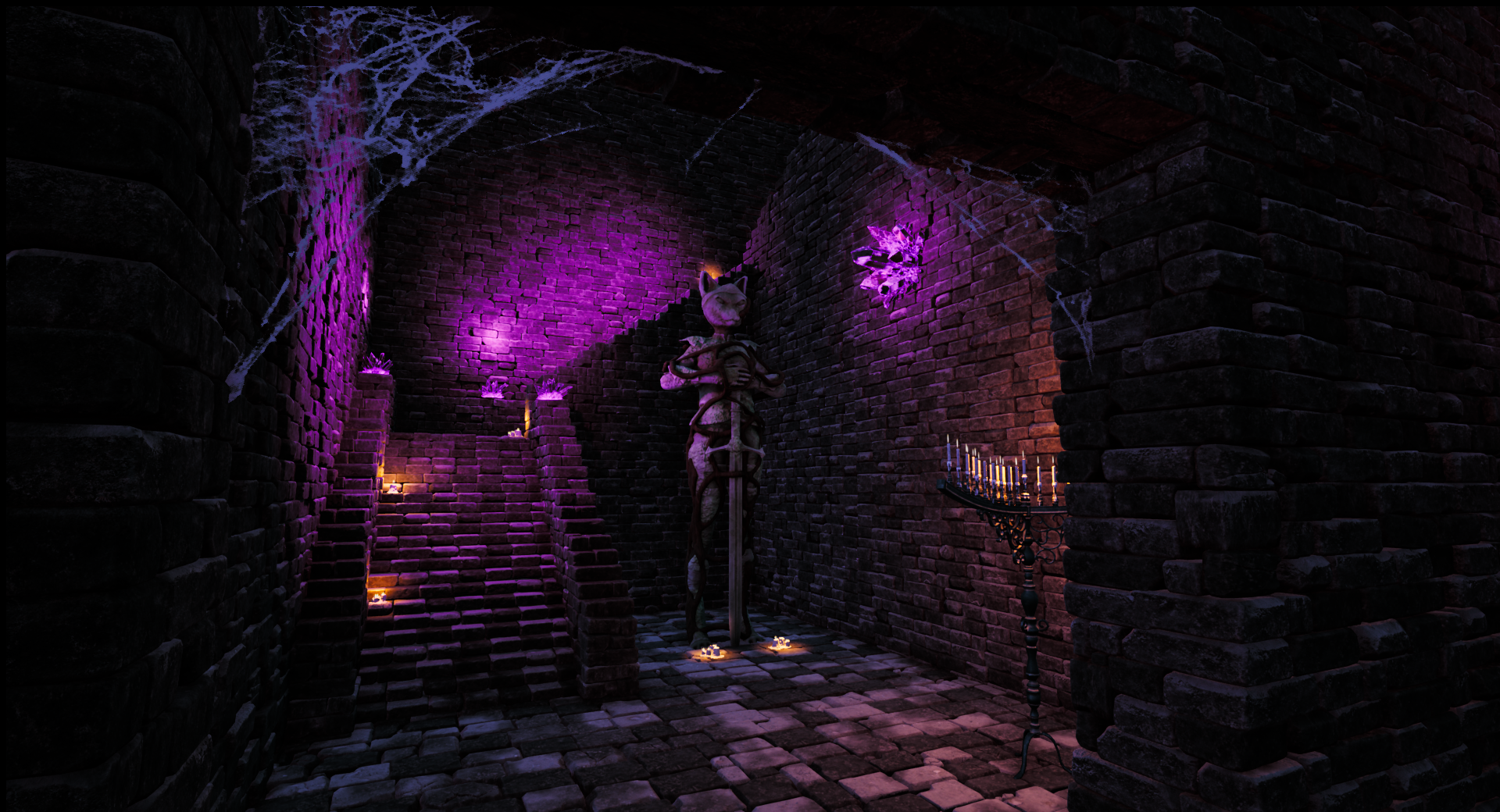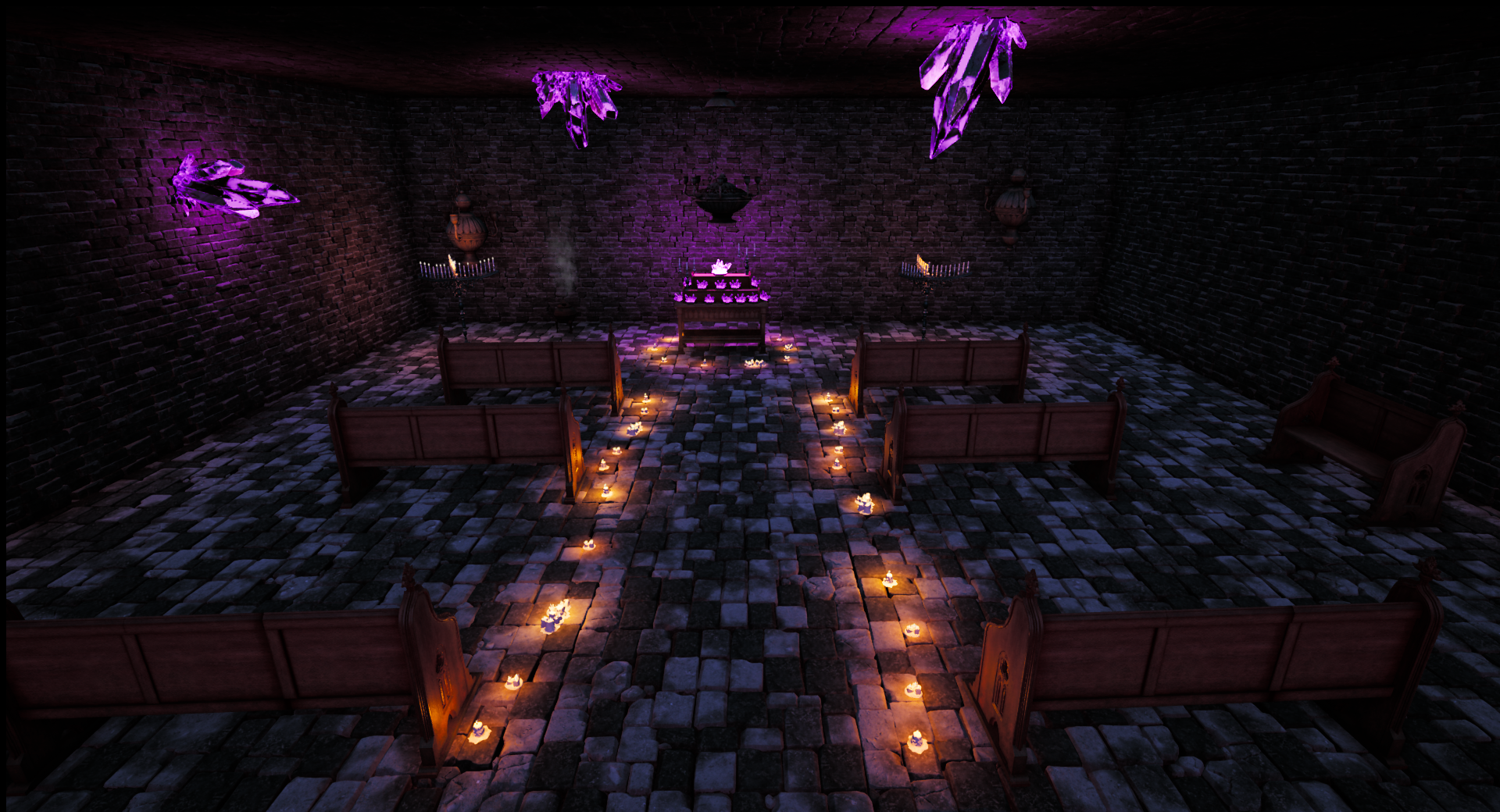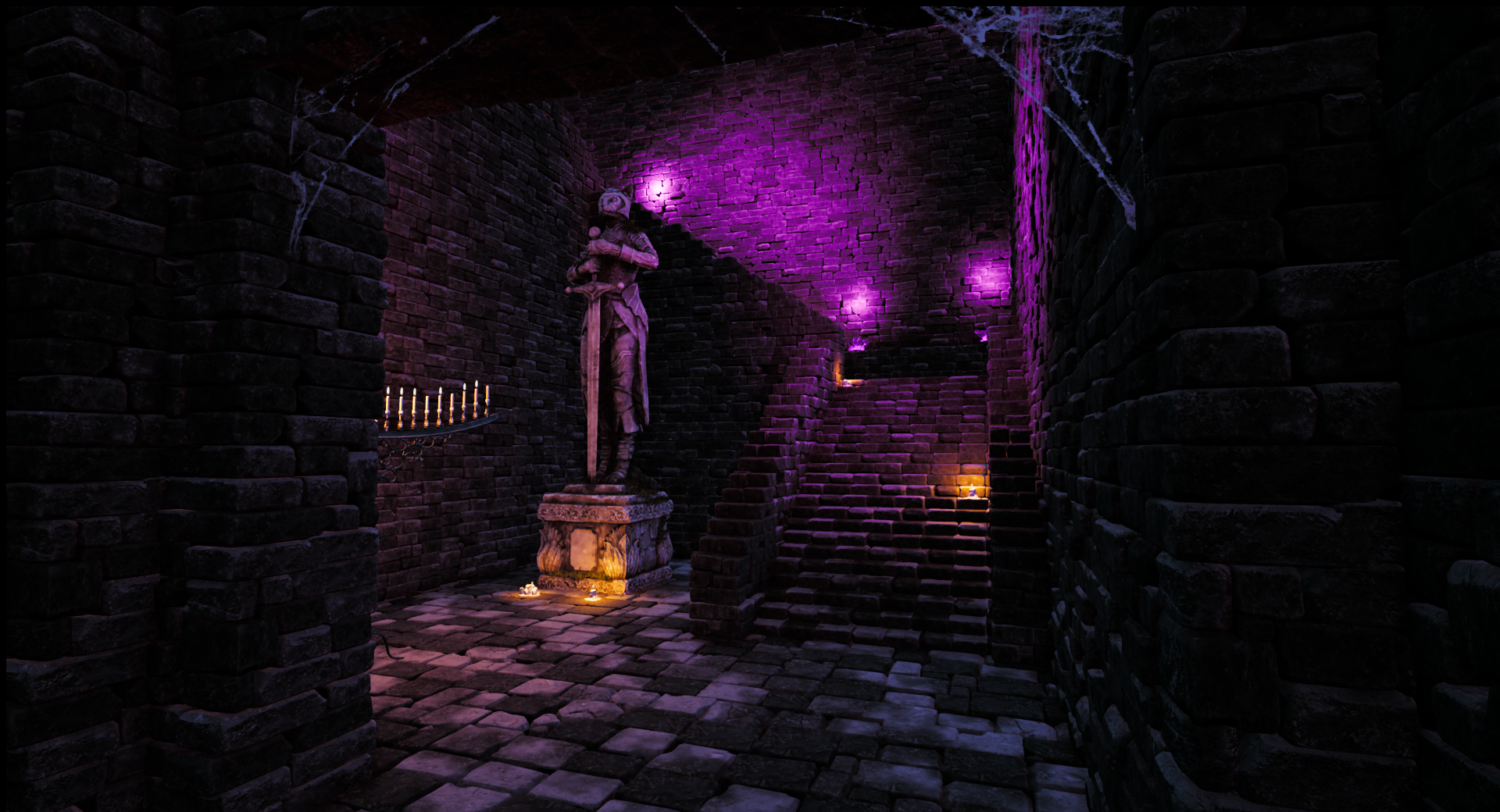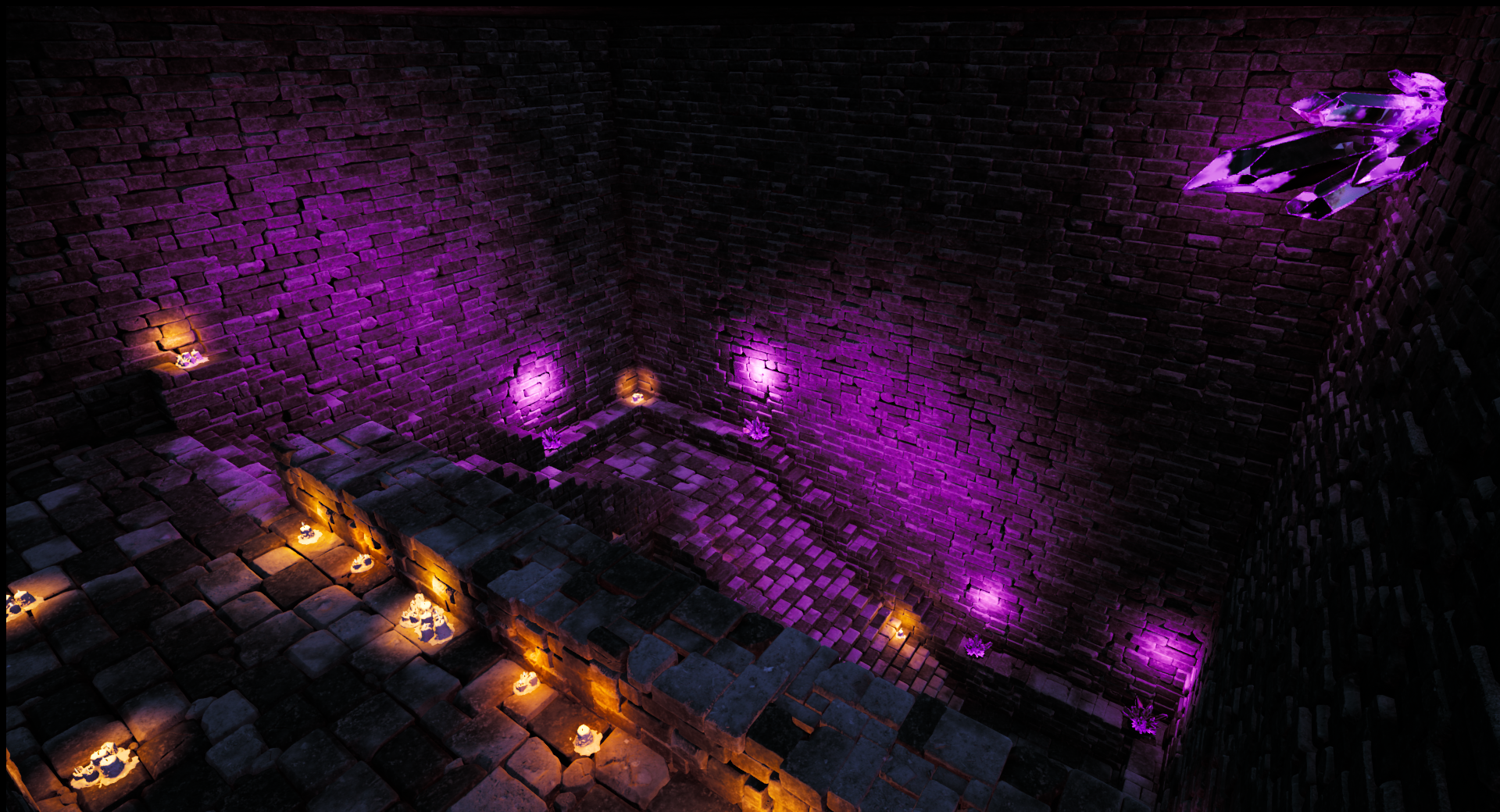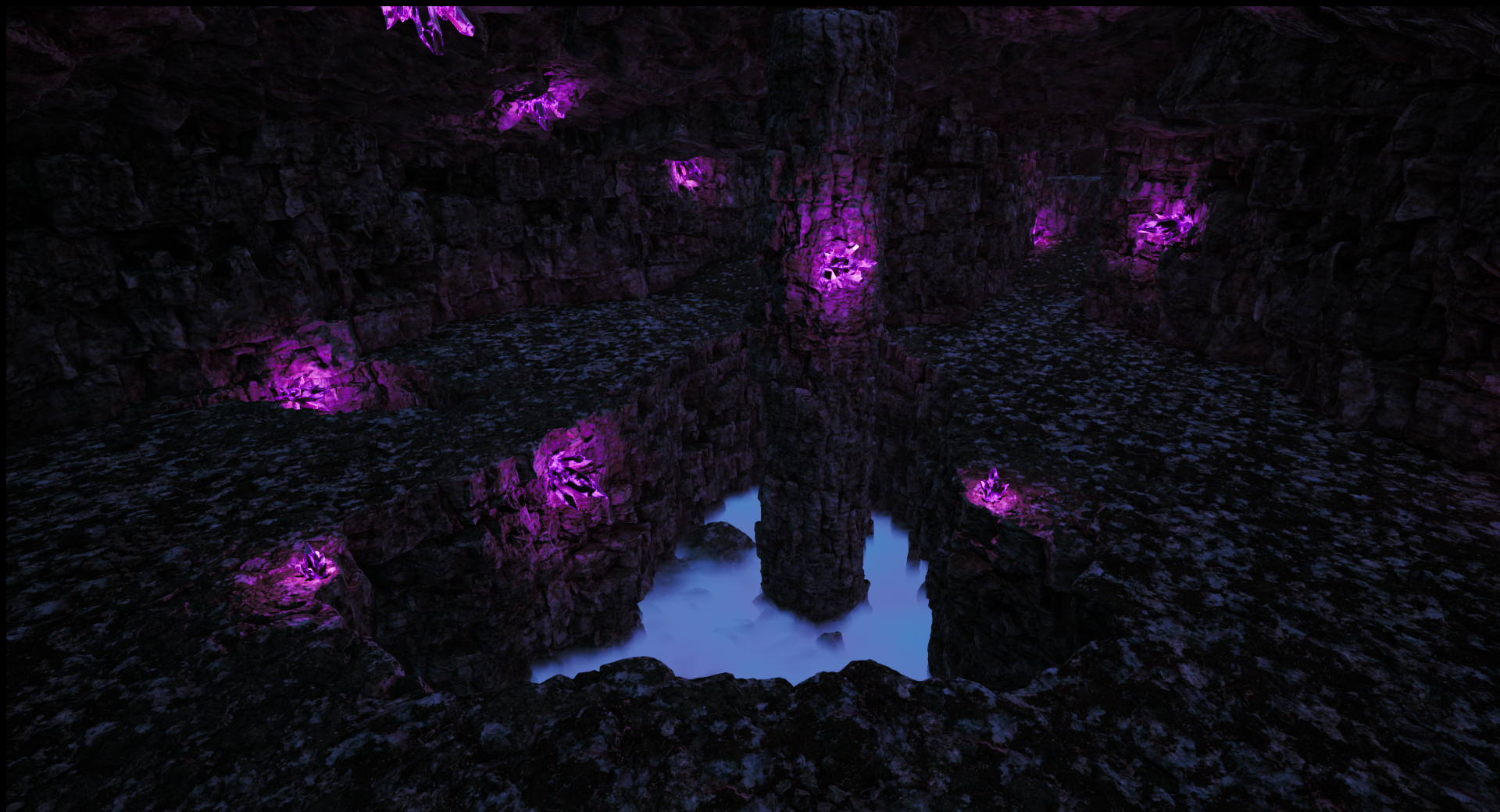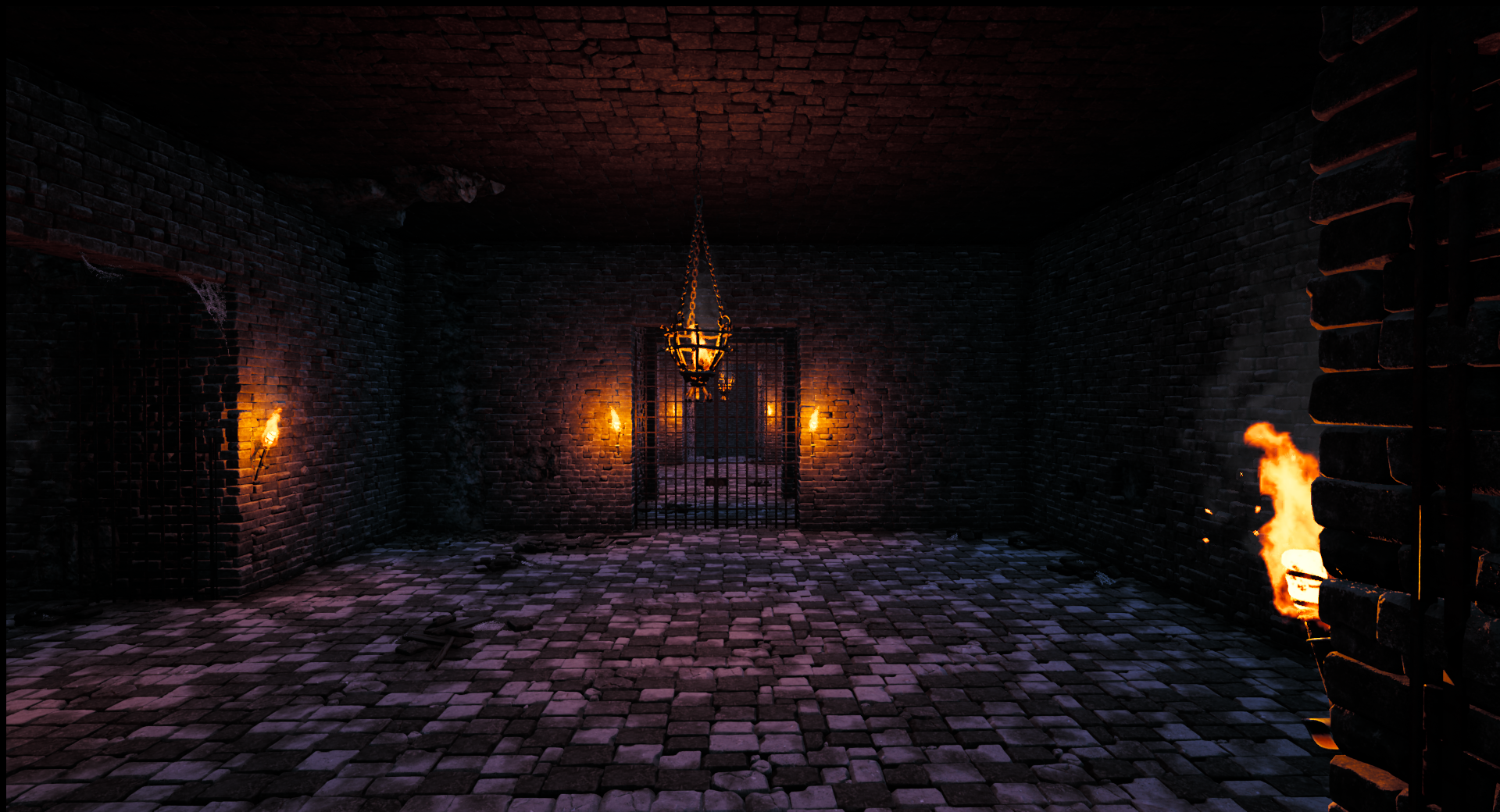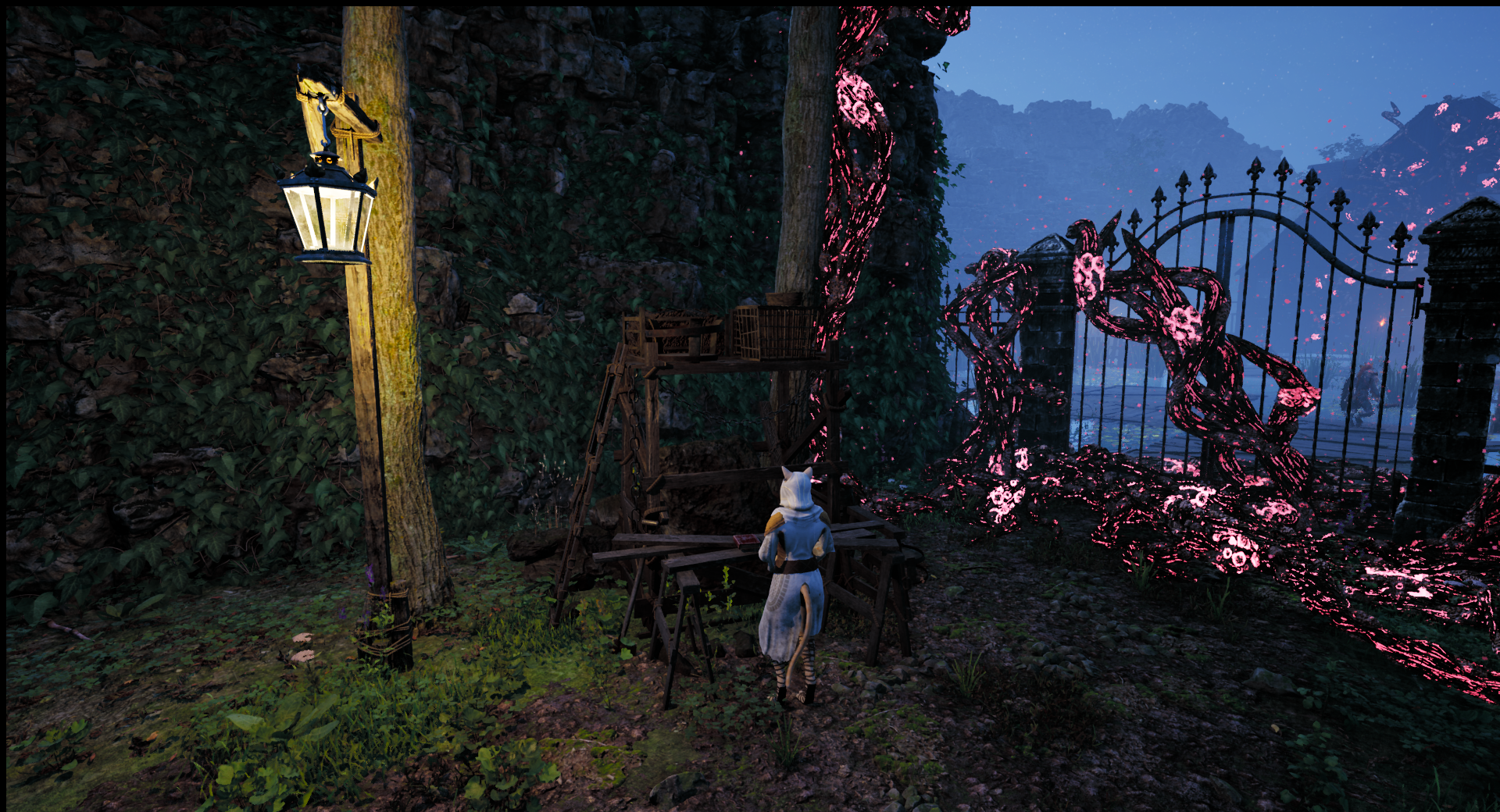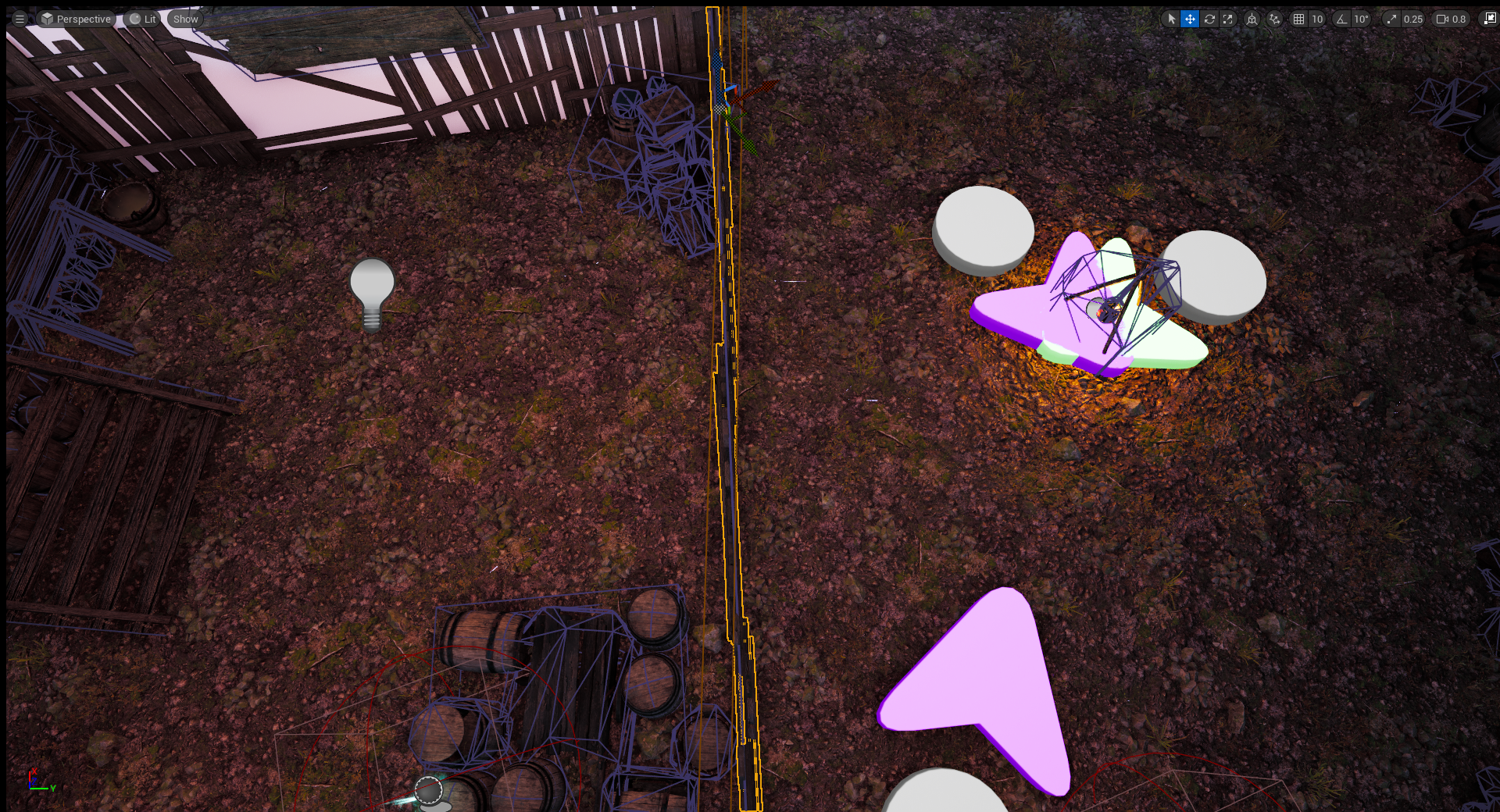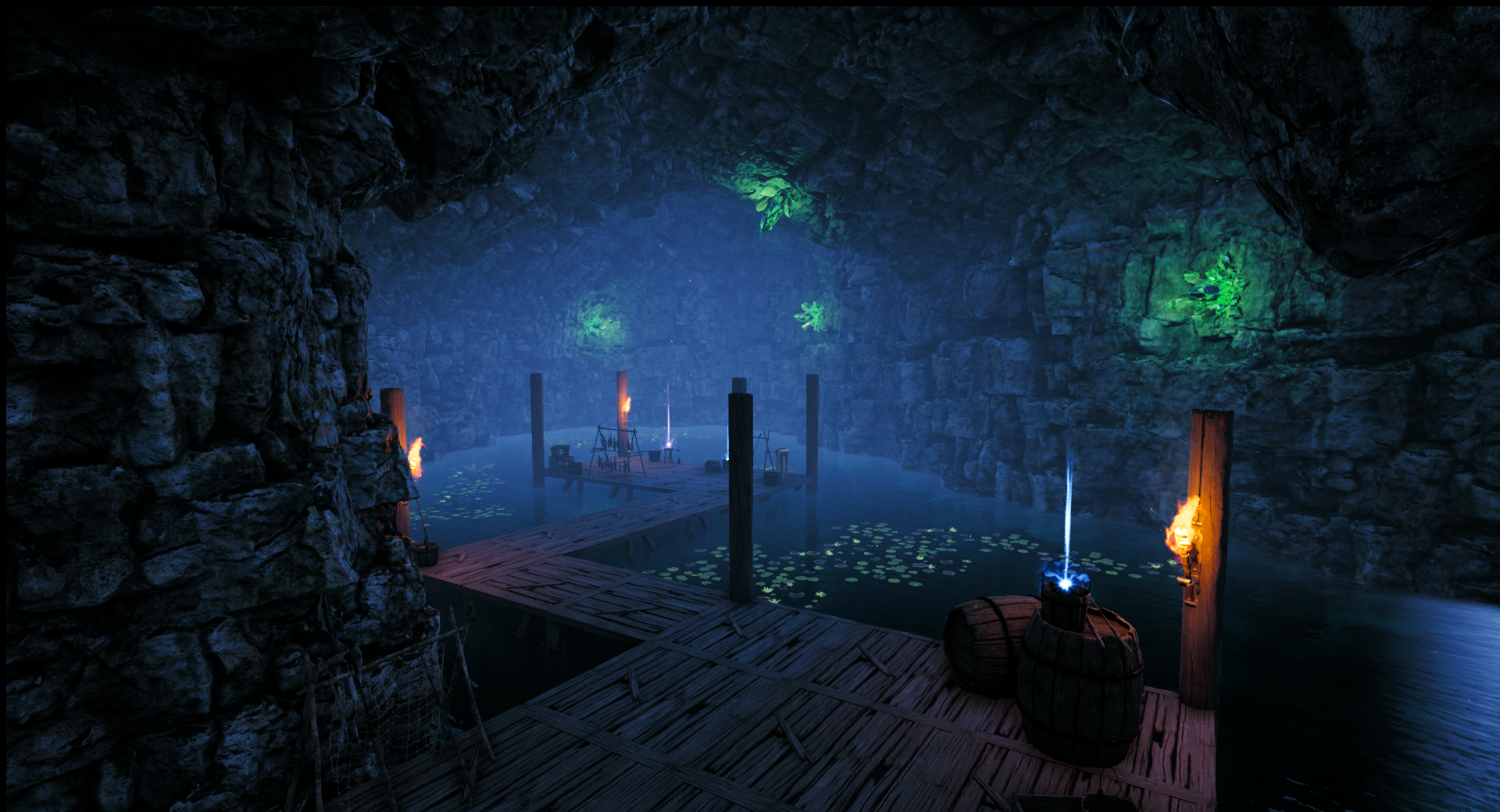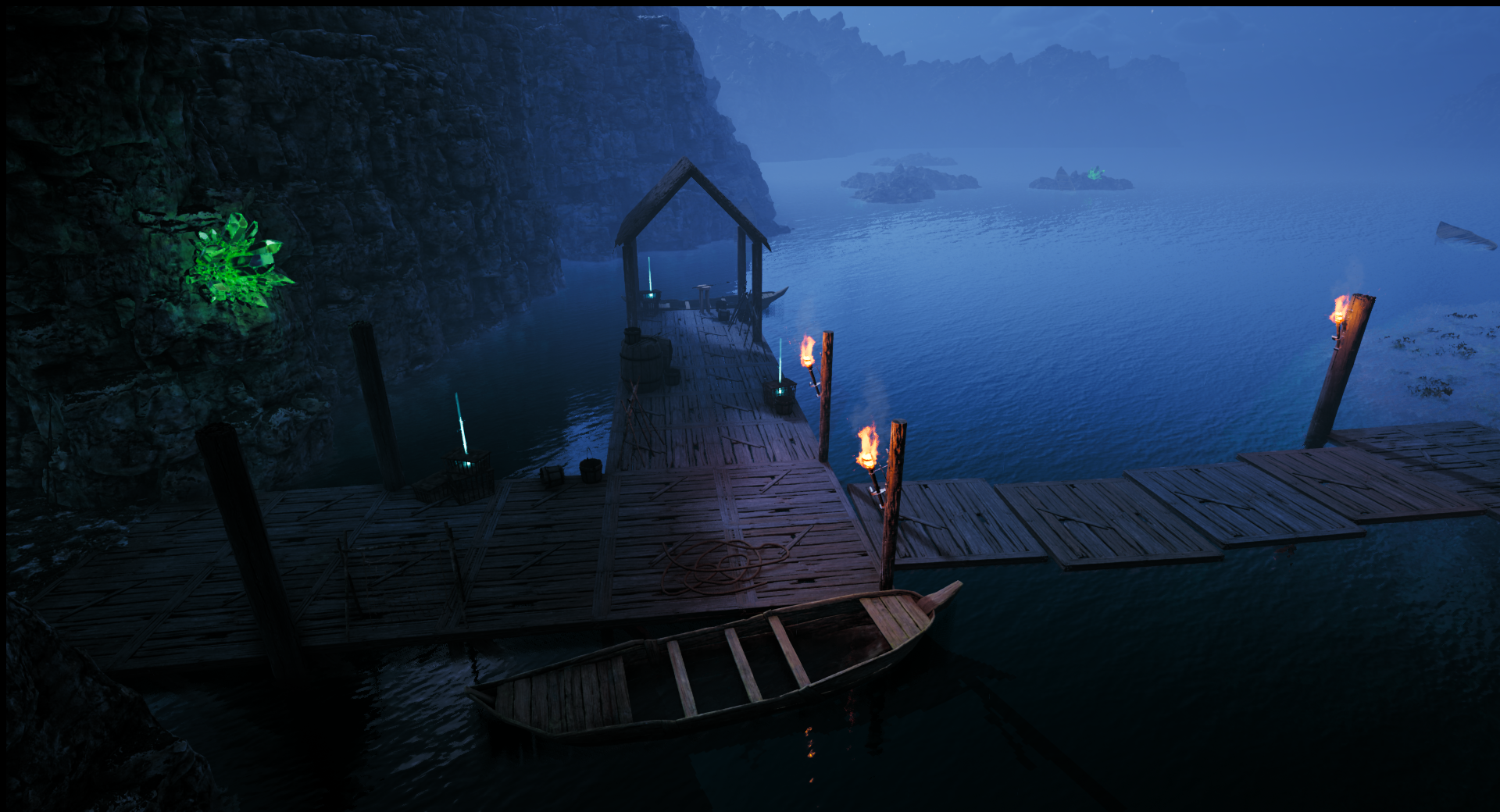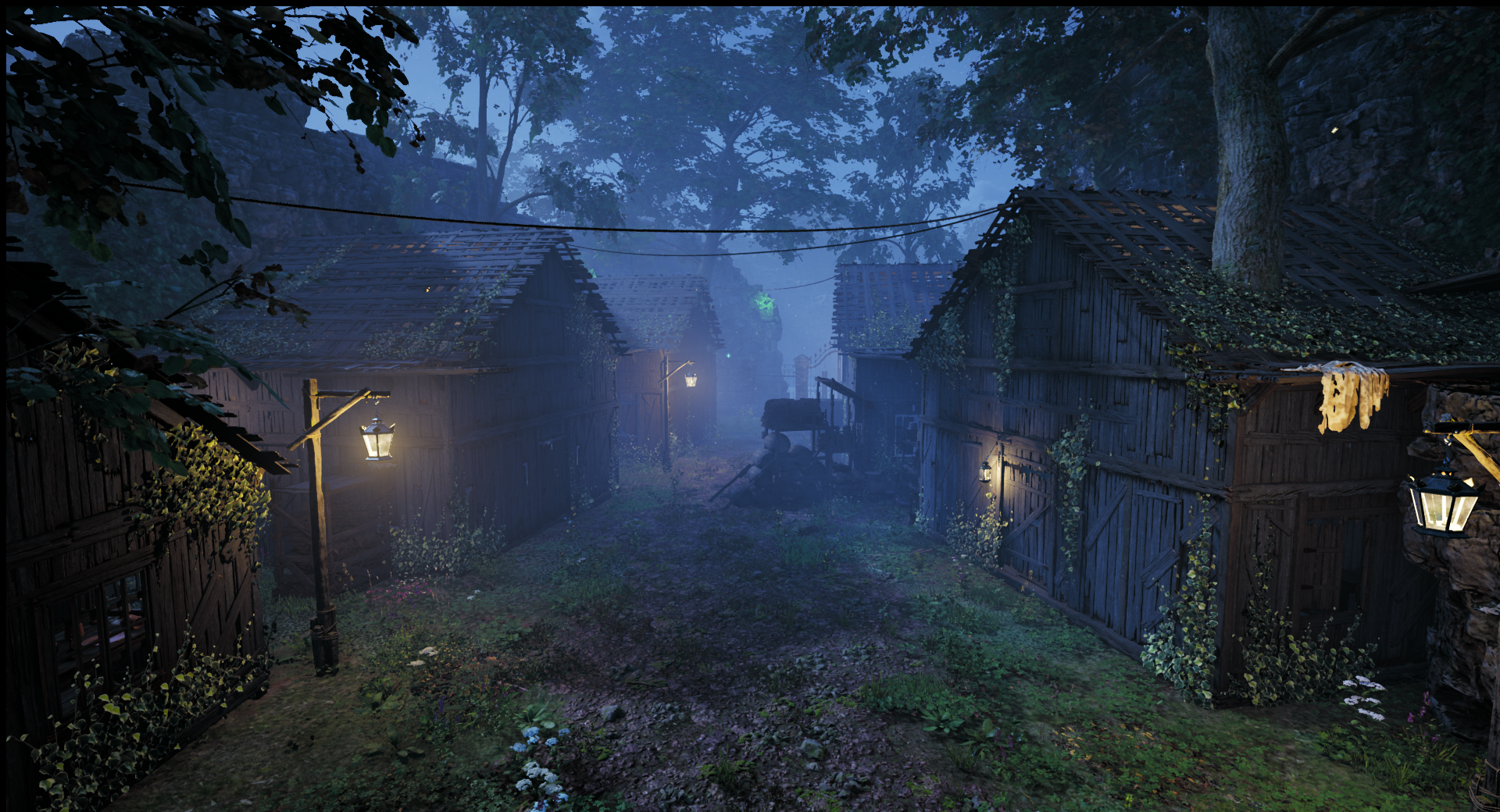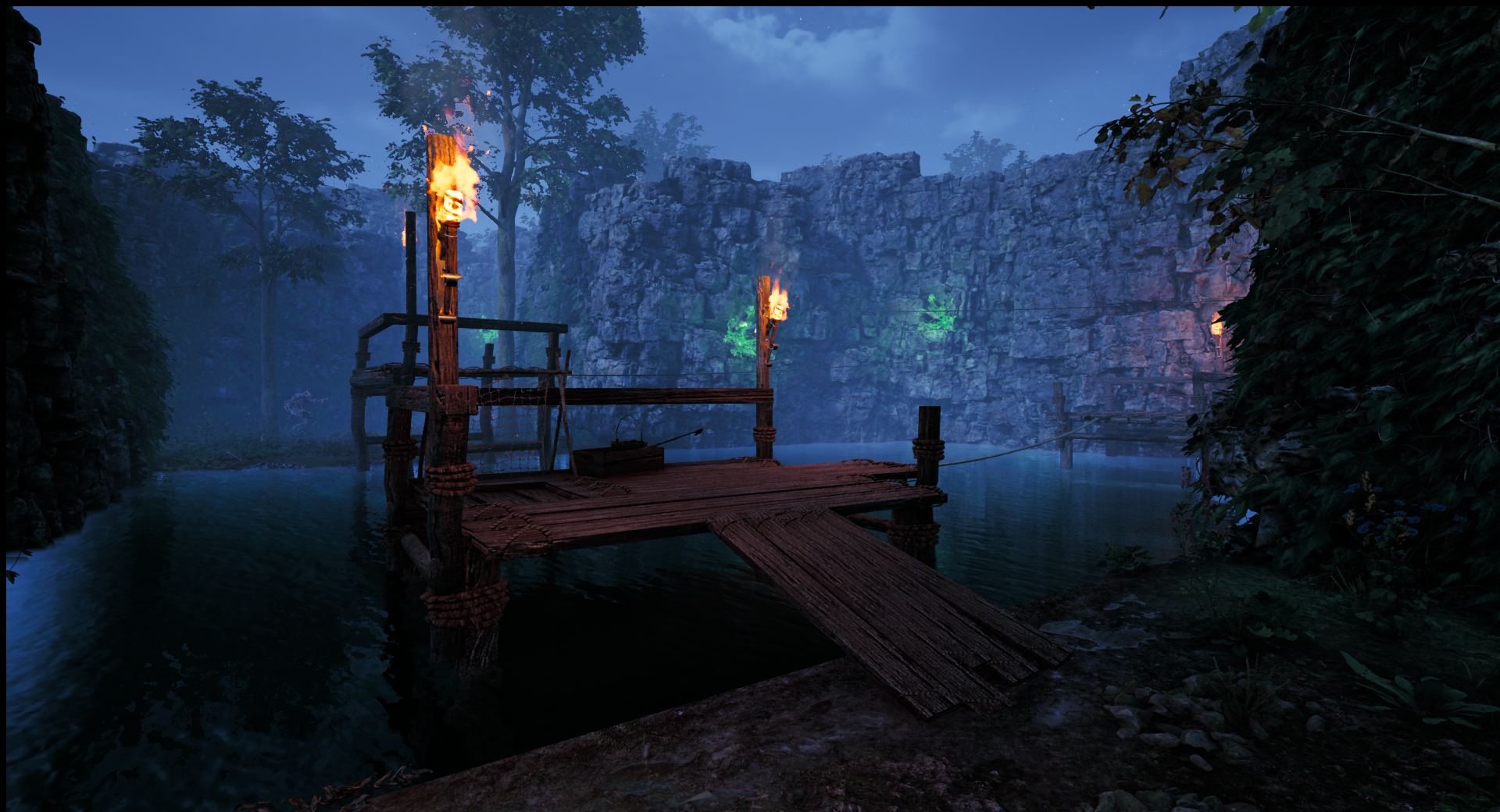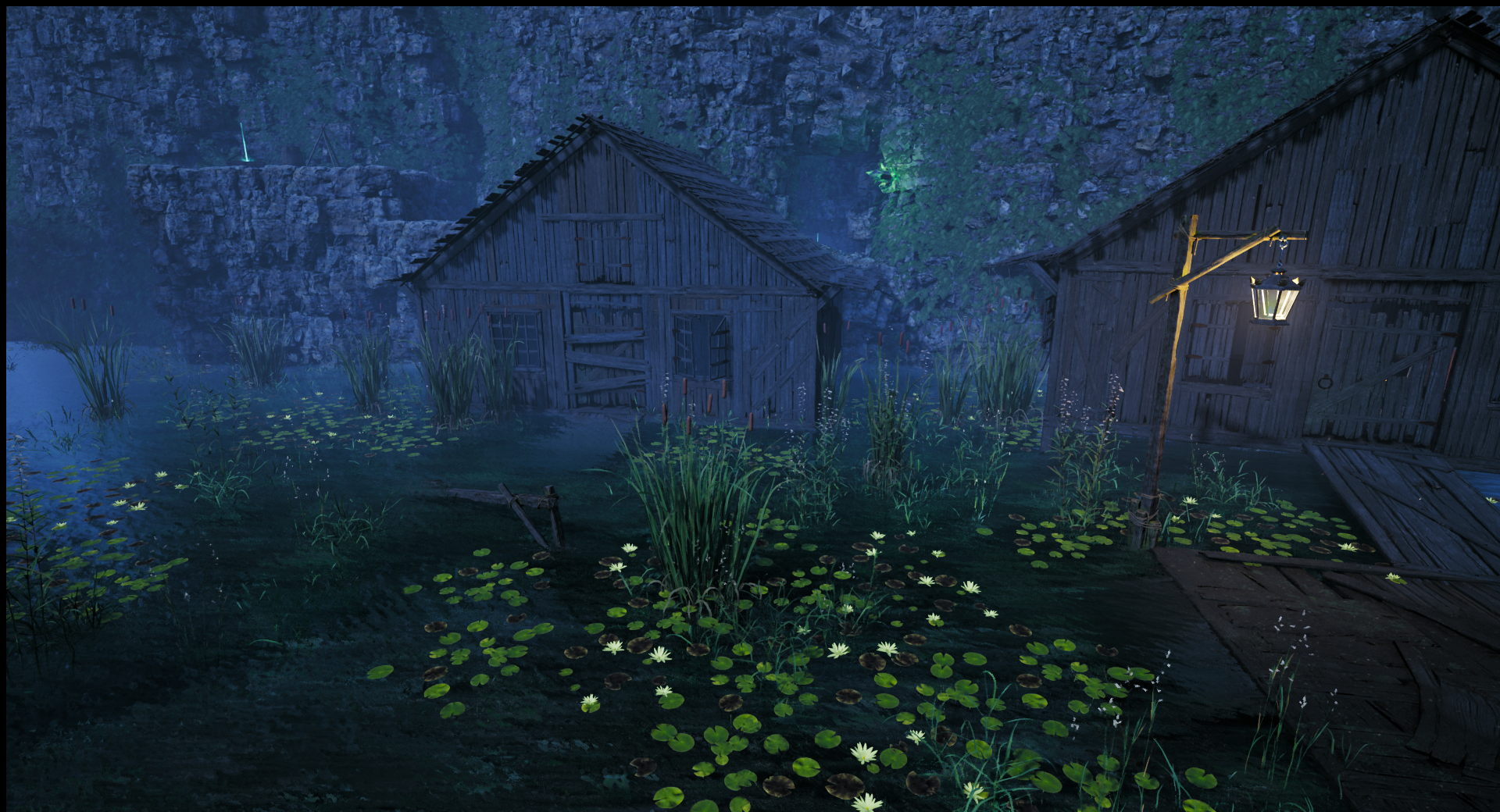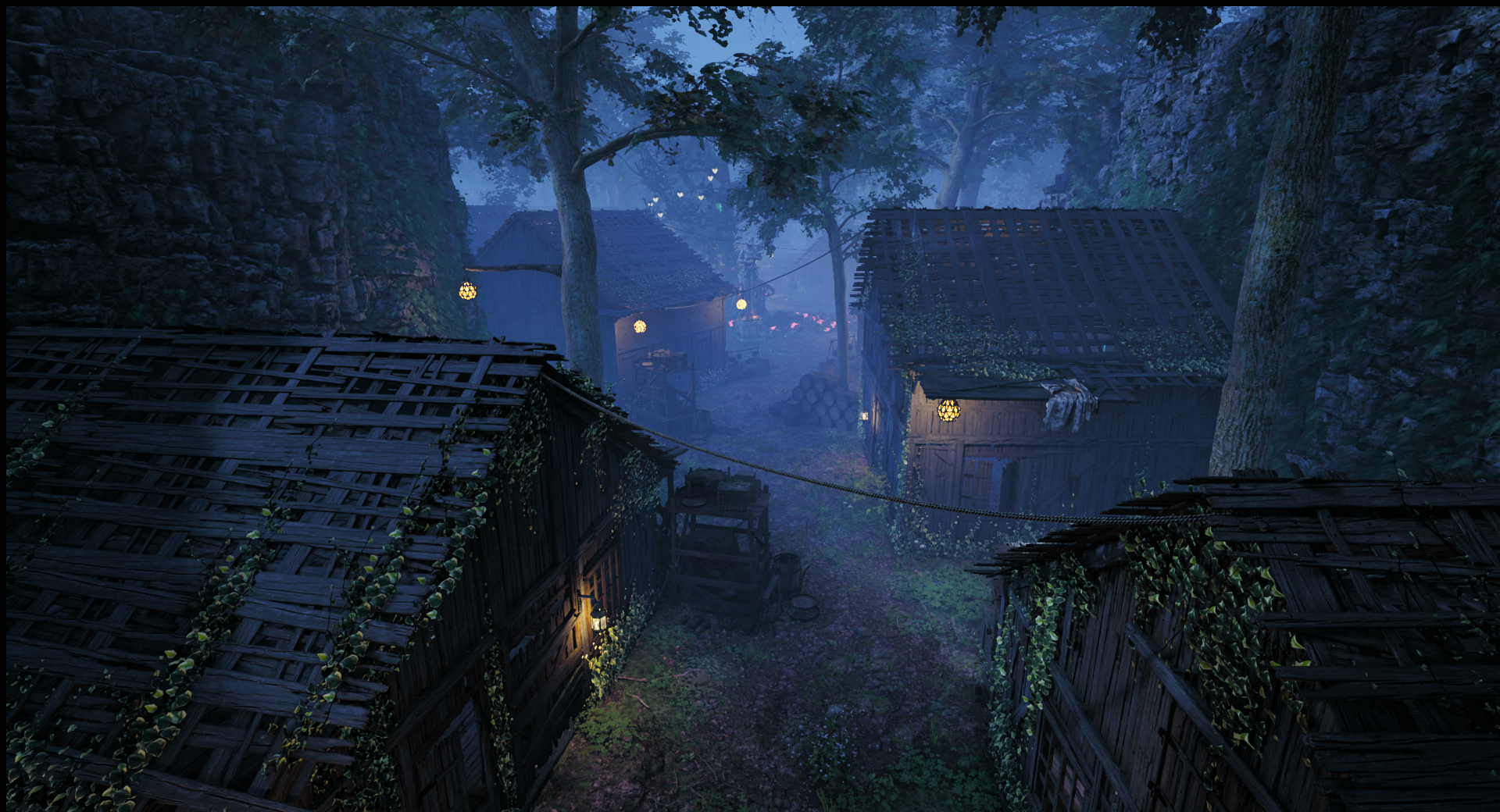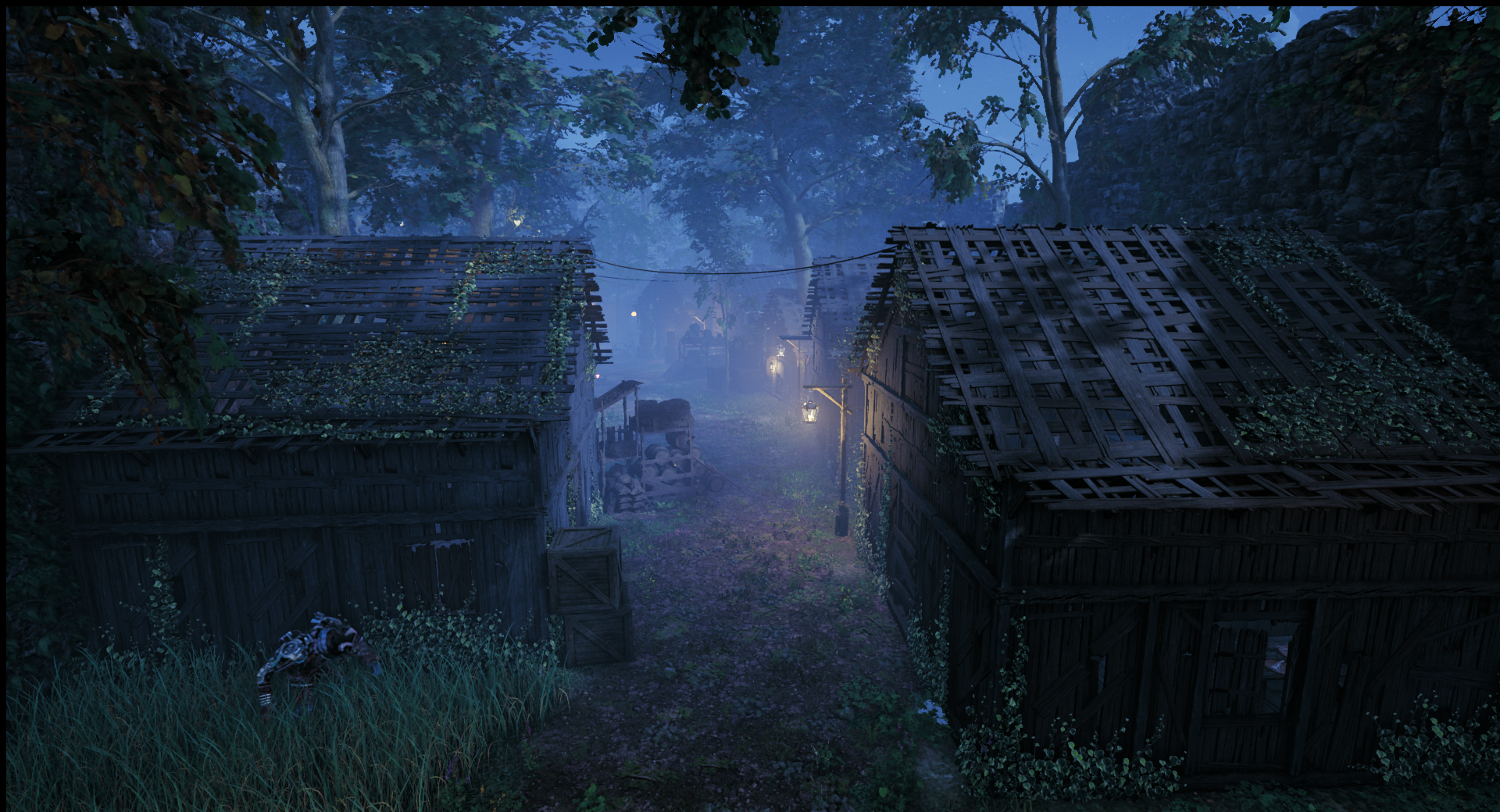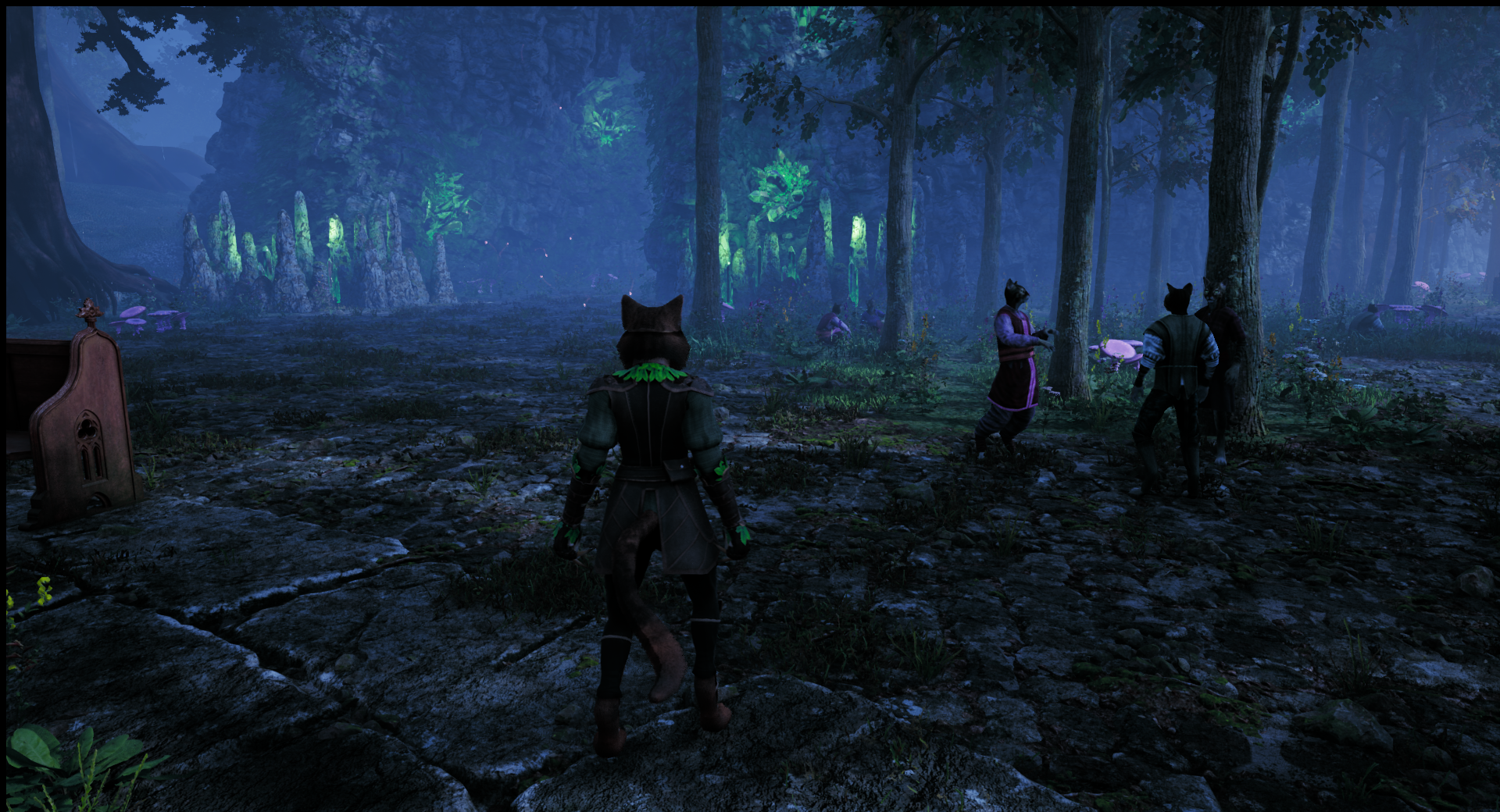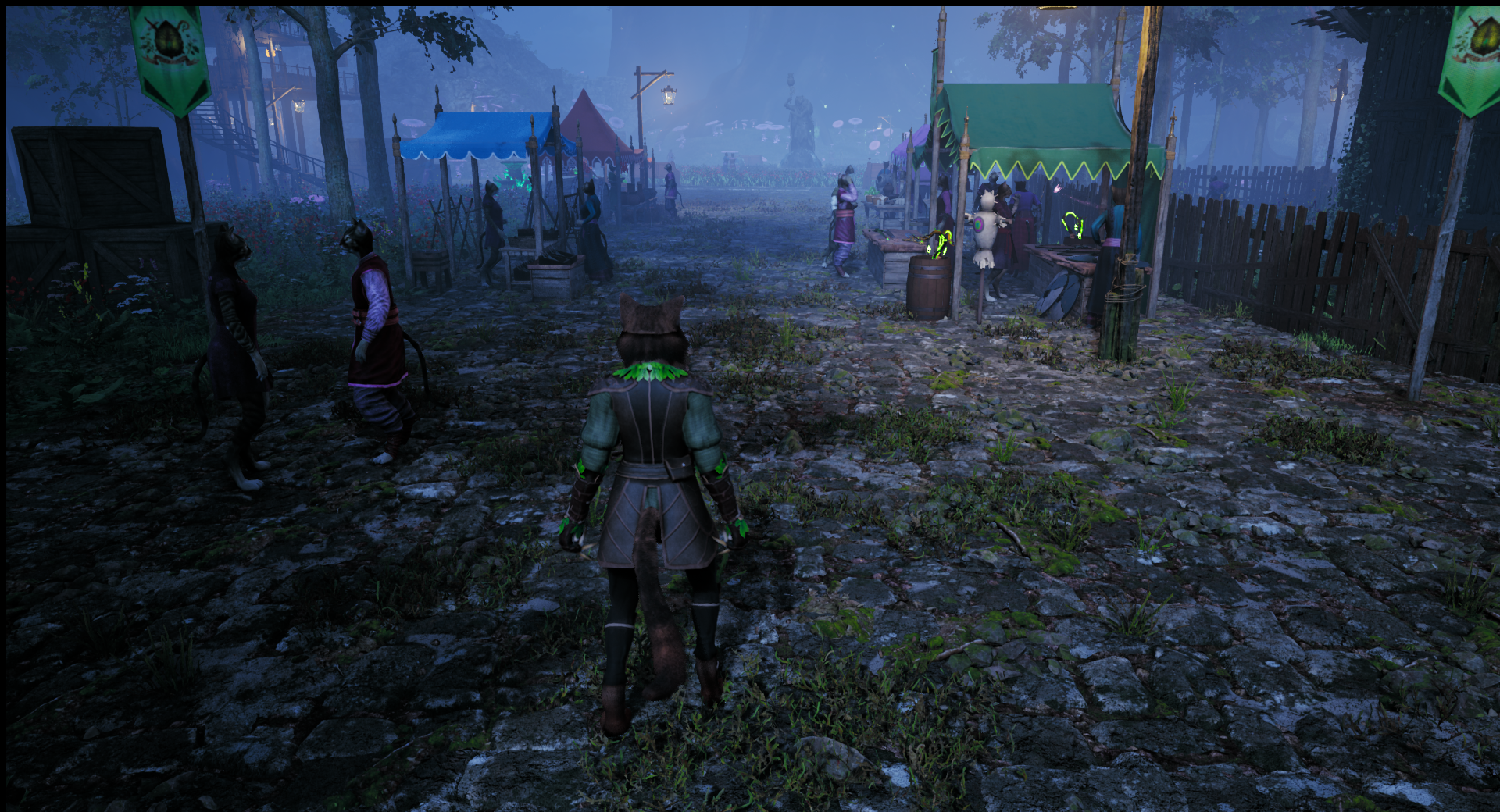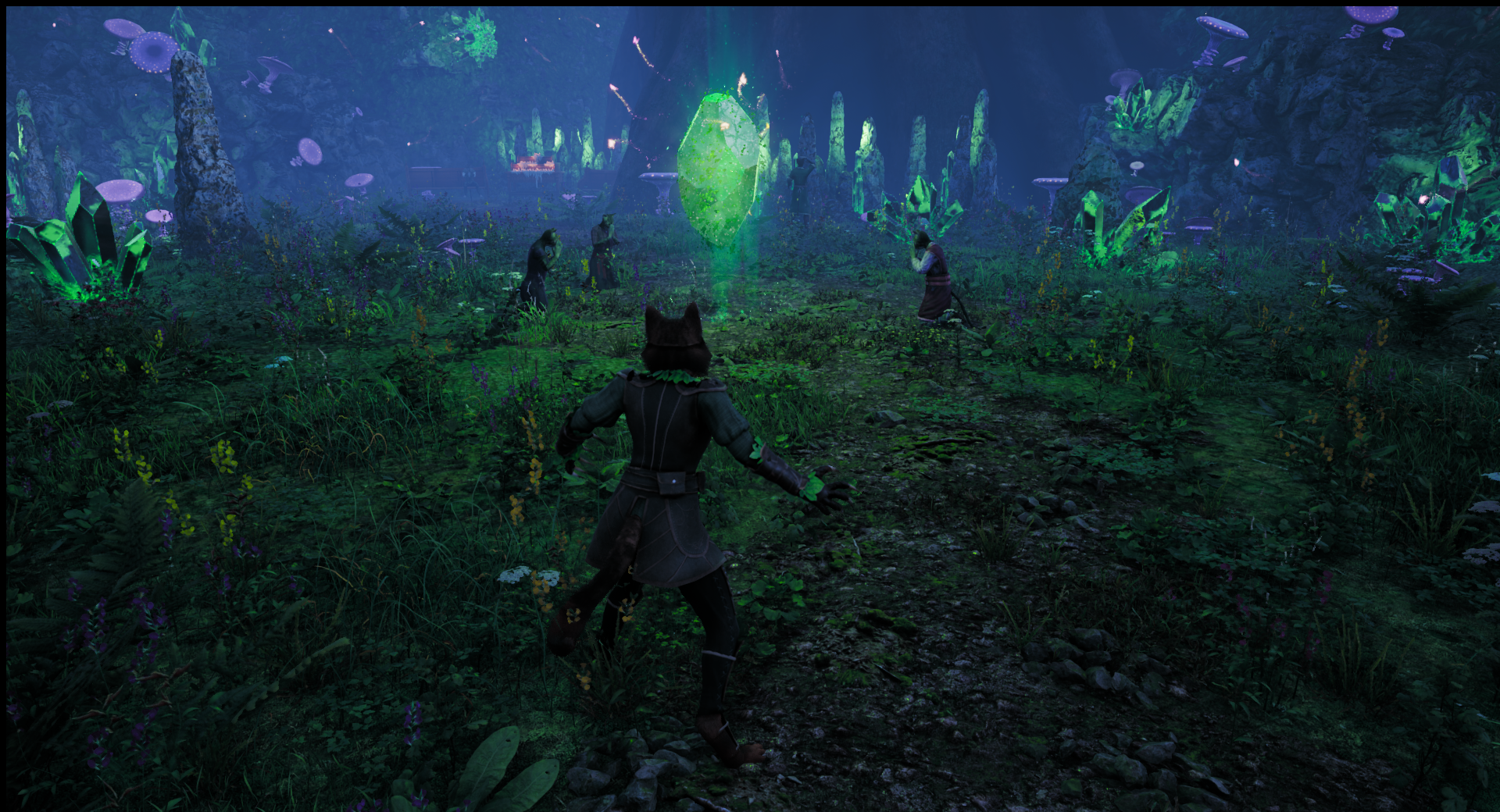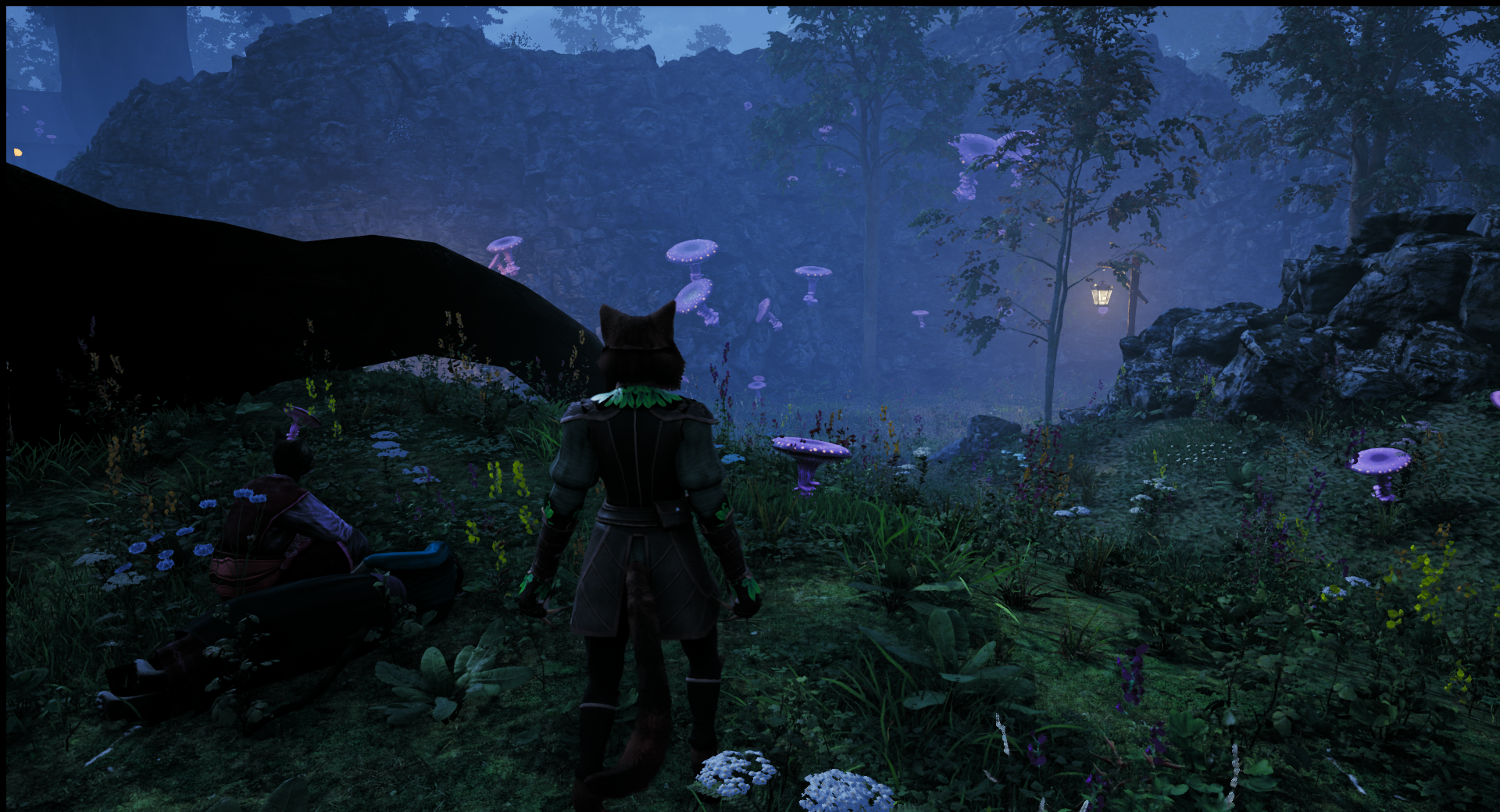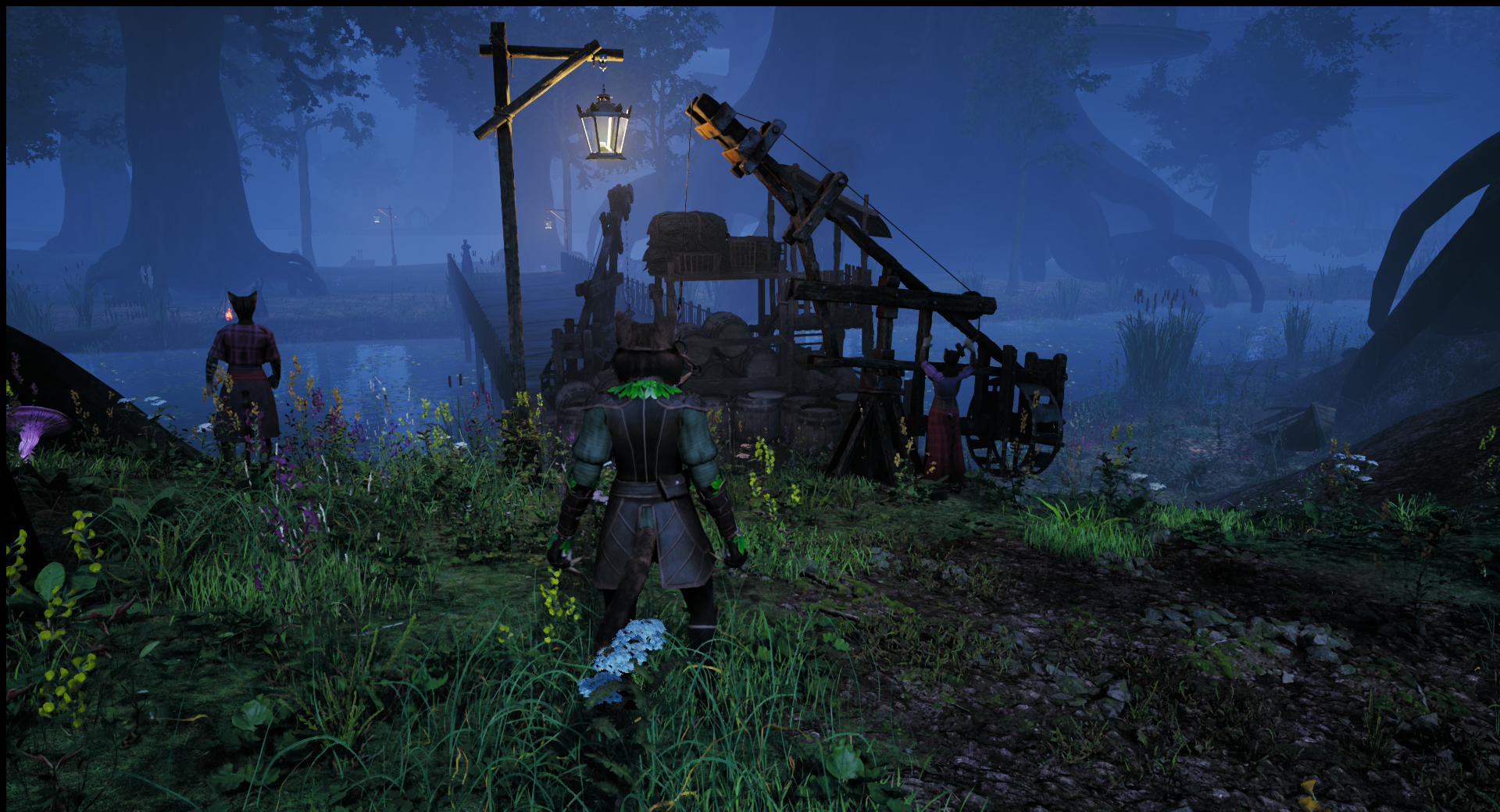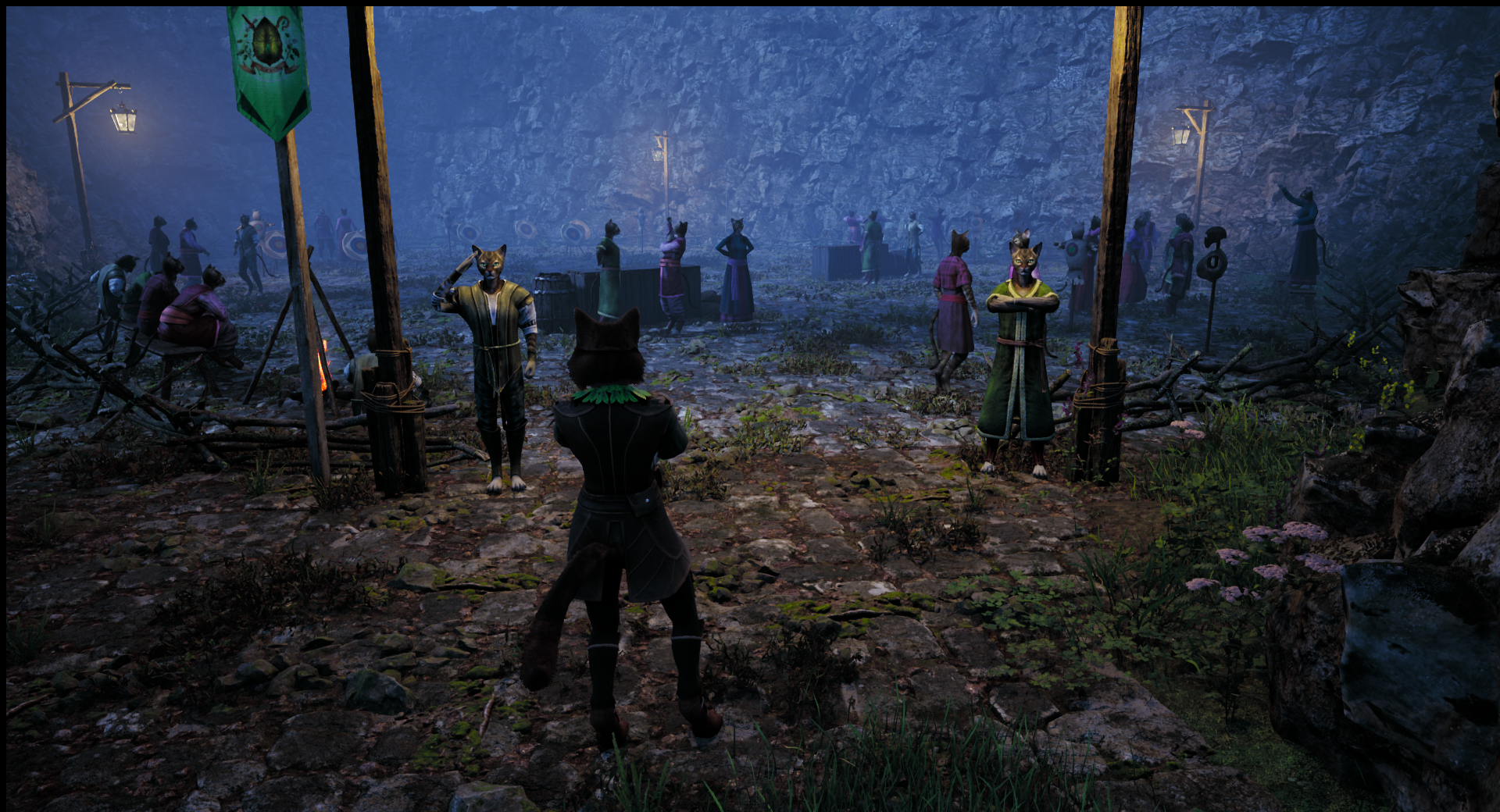Kristala - A dark fantasy ARPG
Project info
Game description
Kristala is a dark fantasy ARPG featuring Sekiro-inspired combat, acrobatic parkour, and exploration to uncover a detailed, dark story. Embark on a thrilling journey as you battle mutated monsters, undead foes, and tortured spirits to uncover the source of a mysterious, all-consuming curse.
In this game I worked as a Level Designer/Environment Artist for 2 years, carrying out different jobs listed below.
Contributions
- Creating blockouts for new maps and zones and iterating on them with Game design
- Creating technical documentation in order to keep information centralized and ready to be consulted by the rest of the team if needed
- Dressing up levels from a blockout phase and adding extra detailing for further polishing (set dresser)
- Placing and setting up NPCs to populate areas
- Testing levels to polish any visual or game-breaking bugs and to ensure the feeling is up to the design requirements
- Creation and configuration of test maps in order to assist the Marketing team with visual materials
- Communication with game design to share views regarding levels, blockouts and other aspects
- Collaboration with the modeling department to discuss things related to needed assets
- Implementing new tools to help speed up, automate and optimize the Level Design department’s workflow
- Testing new engine tools the level department could potentially use in future maps like PCG
Tandar
Tandar is the third map of the game just after Myr (the first one being more open area compared to the rest), and it's the other one where I have worked the most. This level is still in development though, so I'm showing only a very small chunk of content that has been shared in the studios' social media platforms during this year.
Landscape creation, sectioning and initial dressing up
Sculpted the entire landscape of the level using Unreal's landscape and sculpting tools, accommodating the space and sectioning it in the different parts it is divided (3 big parts with subareas within each of them).
Being an open area, taking care of the pacing and distance between the different elements was key to make sure the players would feel like wandering around the level for too long before interacting with either environment elements, NPCs or enemies.
Played around the level (especially the initial part) to test the space, pace and visuals. Dressed up some small parts like enemy camps, villages and caves to have a better feeling of certain areas.
Blockout creation
Created blockouts for different subzones like enemy camps, ruins or caves (bigger and smaller ones) to be explored. Reviewed the blockouts with Game design until achieving a final approval
Documented those blockouts with their description, pacing, overall distribution, goals/objectives, gameplay, etc. for the next iterations on each of them level design wise: set dressing, detailing, polishing, enemy and item placement, etc. This way the rest of the department and the Game Design one would always have up-to-date documentation of every decision and reason behind the blockouts.
Tools and extras
Creation of a testing level for marketing purposes
I created a small test level in order to help the marketing team when it comes to showcase content updates through the studio's social media. By creating small subareas within the level, the marketing was able to show:
- New mechanics
- Concrete locations/environments
- Enemies and their abilities
- Different character clans and their gear
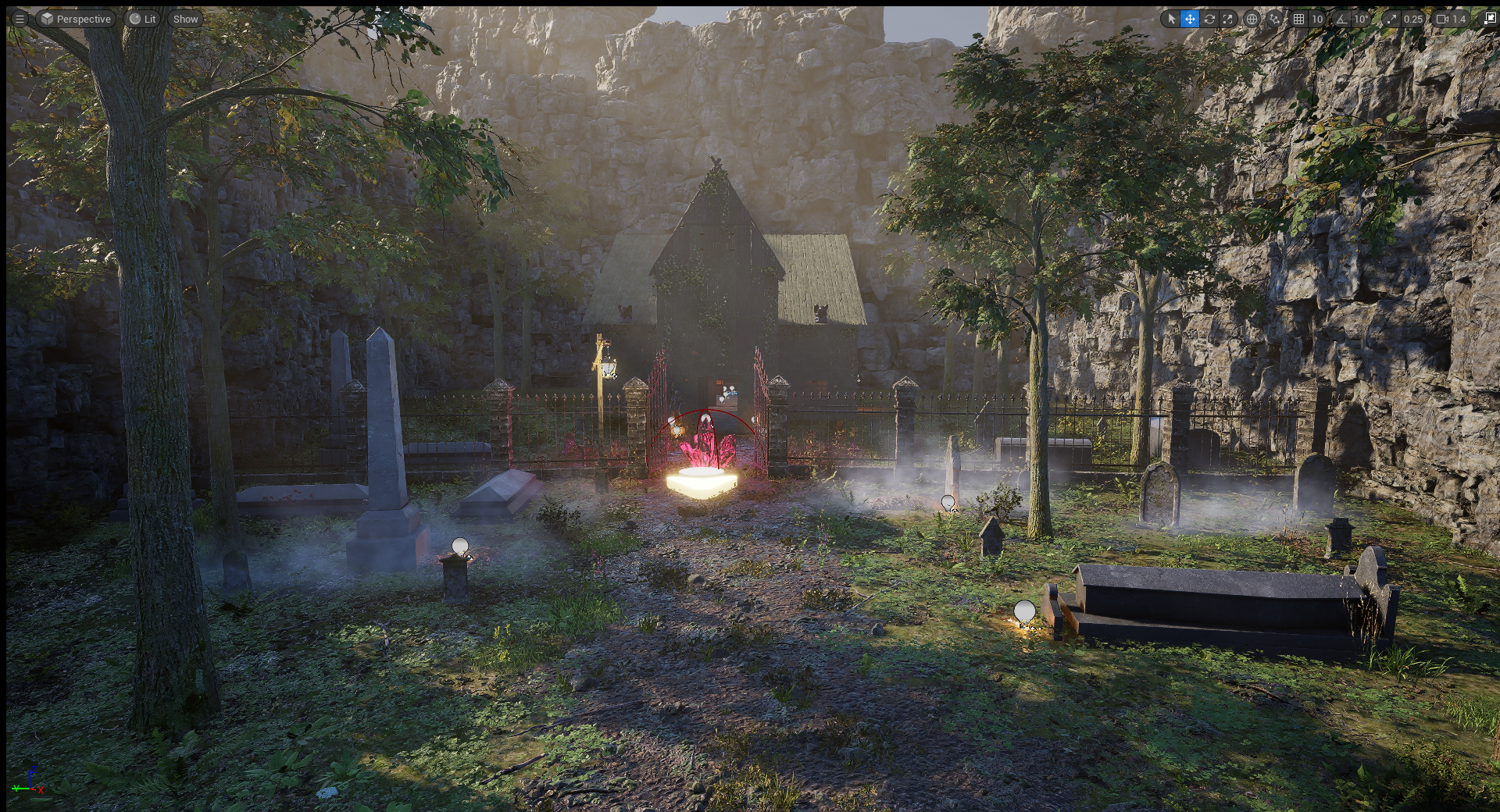
Investigation of Procedural Content Generation (PCG)
With Unreal Engine 5 Epic added the Procedural Content Generation Framework (PCG), a toolset for creating your own procedural content and tools inside the engine, offering the ability to build fast, iterative tools and content of any complexity.
Wishing to find ways to optimize and speed up our Level Design workflow and processes, I began investigating the framework, setting a plan to start working in small scattering tools that would let us quickly populate areas with assets and learn more about the framework before focusing on creating tools for dealing and managing with bigger scenarios.
In order to keep things organized and the department up-to-date, I created some written tutorials and technical documentation explaining the basics of PCG and the tools that I would be creating as well as the scenarios we would be tackling down with the framework's help.
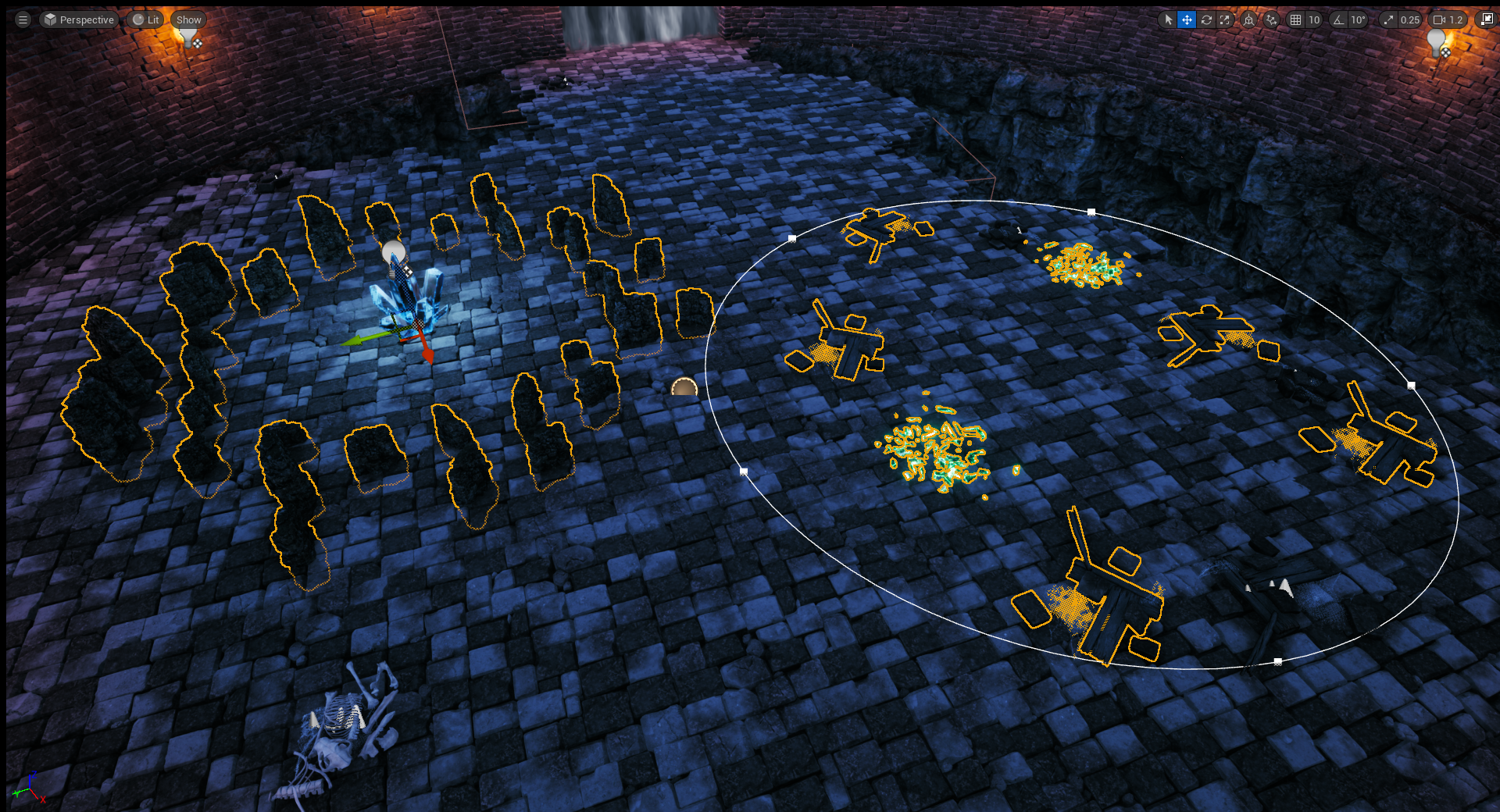
Myr
Myr is the second map of the game and hosts the necromantic Myrtuna clan. The level itself is divided in three main zones: an initial cave area which leads you towards Myr's Capital (second zone). Once in the Capital, the player can explore around, interact with NPCs and eventually decide to enter the third area, the catacombs.
The catacombs are also divided in three areas, each of them being in a more ruined state as you progress until reaching the final one which is the end of level and prior point to the following map.
Replacing blockout (set dressing)
Replaced the level's blockout starting with the general level structure from the first part (dark caves) with the assets made by the modeling team (level dressing), slowly gaining experience regarding blockouts, set dressing, gameplay, space, etc.
Proceeded to move on and do the same for the catacombs area (third main zone) while the Capital was being worked on. The work in this area had multiple iterations as I began setting the entire zone's foundation with a set of available assets that later on changed for others that were more fitting to the whole environment.
Reworking the Capital
Reworked the entire Capital. I swapped the initial structure created around rocks and wood (pathways, marketplace, bridges...), with pieces from the Catacombs to ensuring both areas were cohevise lore and level wise.
Monitored and fixed collision issues in certain areas, preventing them from blocking the player and being unable to continue playing or affecting the camera negatively.
Replaced the entire rocky structure from the Capital's palace, exchanging the rocks for the catacombs pieces and making sure everything would fit within the space, readjusting all the floors, ceilings, walls and props given the new palace's layout.
Placed NPCs around the Capital to add to the overall atmosphere
Lighting passes and testing/bug fixing
Performed some extra lighting passes after the main and base lighting was placed in the dark caves area. Upon finishing, I performed the same action with the caves present in some remote areas within the catacombs zone.
Played the entire level (dark caves, Capital and catacombs) several times to test the gameplay, mechanics and overall flow, fixing bugs that were found and reported.
Nisar
Nisar is the initial map of the game and hosts the nature Nisargan clan. The level itself is also divided in different areas, letting the player experience a rich exploration due to the presence of caves, villages, forests, a graveyard, etc.
Props adjustment
With this map already existing and being worked on when I joined, one of my tasks was to help placing new props for further detailing and polishing while adjusting others that felt out of place or weird.
Monitoring and fixing collision issues in certain areas was part of the job too, preventing them from blocking the player and being unable to continue playing or affecting the camera negatively.
Level testing and bug fixing
Once the props were adjusted, I began helping the team by playtesting the level in order to identify any potential bugs that had to be reviewed and fixed.
For the ones related to our department, I checked the logs provided by other coworkers and proceeded to address and fix the bugs coming from the level design department , further playtesting to ensure the bug was properly fixed and nothing else was affected.
NPC Placement
In order to boost the Capital's look and feel when it comes to interactions, I helped adding extra NPCs around the entire area, adding more detail and providing an engaging atmosphere for the players.
To achieve such I used the setup prepared for the NPCs where you could decide which interaction to use, allowing me to create interactions between them and giving the players certain visual hints.
